Covid
Corona Virus - an annotated vocabulary
27 04 22 14:35 Filed in: Other
“Where were you when the world changed?” we wrote, a year ago, under the heading “The Year of Covid”.
The world did indeed change, and the “year of Covid” is entering its third year. Turns out, Global pandemics don’t magically melt away, even when we triple vaccinate the wealthy nations.
So Sue and I are taking a new approach to our documentation of this chapter of our lives. Extended periods of shared experiences tend to generate their own vocabulary.
Here then is our annotated vocabulary of the Covid-19 pandemic in Victoria, Australia.
5/10 km limit
During Melbourne lockdowns 5 and 10 kilometre limits were introduced to reduce mobility and therefore the spread of the virus. Online tools were published to allow people to work out their permitted radius and movement from their home address.
Active cases
People with Covid who are still infectious.
Aerosol Transmission
Refers to the transmission of the virus by small liquid droplets carried in the air, in a cloud. Governments around the world and even the WHO were slow to accept expert opinion that Covid 19 was primarily spread by airborne transmission, as this had expensive ramifications for attempts to control spread of the virus.
Anti Masker
This refers to people who refused to wear masks. They saw it as an infringement of their personal freedom and often part of a bigger conspiracy by the State to wrest control from individuals. Exemptions for health reasons were available from GPs but only for a very limited range of conditions. Fines were imposed for non mask wearing.
Armchair Epidemiologist
There has been no shortage of ‘experts’ who have no expertise, experience or training, offering up their pearls of wisdom to anyone who will listen.
AstraZeneca (AZ)
The AstraZeneca vaccine was developed in the UK by an Oxford research team in 2020. It uses a weakened animal virus , chimpanzee adenovirus, called a viral vector, that contains the genetic code for the spike protein. Once it enters the body, it tells the cells to make copies of the spike protein. The immune cells recognise the spike protein as a threat and begin building a response to it.
AstraZeneca has been a very successful and useful vaccine, despite the bad press it received, due to a rare clotting side effect. Immunity does wane over time but it still protects from severe disease.
ATAGI
The Australian Technical Group on Immunisation is a Federal Government body that provides expert advice and recommendations to the Health Minister and the TGA (Therapeutic Goods Administration). ATAGI, probably not a household word pre pandemic, was now spilling from the mouths of politicians and very much in the public eye. Their role in determining which vaccines were safe was now of vital interest to young and old.
Booster
The vaccines we are currently using in Australia, all need a third dose, and even fourth, to avoid failing effectiveness over time. This has become known as being boosted.
Border Bubble
States with differing levels of infection have closed their borders to each other at different times. Border communities that share facilities have been allowed to cross State borders within a defined area called a Border Bubble.
Border Checkpoint
Police and Defence Force personnel checked people’s passes during times of Border closure. Lines of cars and trucks and ad hoc overnight camping spots, became the norm.
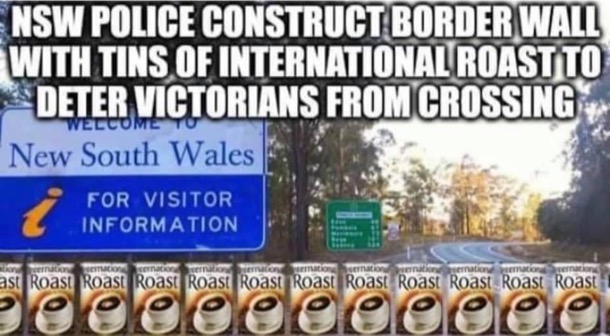
Bubble buddy
During the long second wave lockdown, the mental health of people who lived alone became a concern. To ease the isolation, people were allowed to nominate a bubble buddy, with whom they could spend time, albeit within strict guidelines. When this began to include life partners who lived in different houses, the Premier tied himself in hilarious verbal knots trying to explain the rules.
Casual Contact
Strangers who have the possibility of infecting each other, just by being in the same place, at the same time.
Check in
The technology of QR codes became the solution for knowing who could have been infected in a particular time and place. “Checking in”, using a government developed app on one’s smart phone, became an act of community minded altruism, and, later, a quick way of demonstrating one’s vaccination status.
Chief Health Officer
Professor Brett Sutton has been Victoria’s Chief Health Officer since March 2019. By the time he had appeared at a few Covid Press Conferences, he became very well known to Victorians. Quite quickly, the title became shortened to the “CHO”. CHOs of other states were also very public figures.
In Victoria, from the beginning of the pandemic until later 2021, when the powers were curtailed, the CHO had the legal power to order all sorts of restrictions.
CHOttie
Brett Sutton is an attractive man. He generated a lot of swooning, a lot of memes, a Facebook fan club and even some ‘merch’.
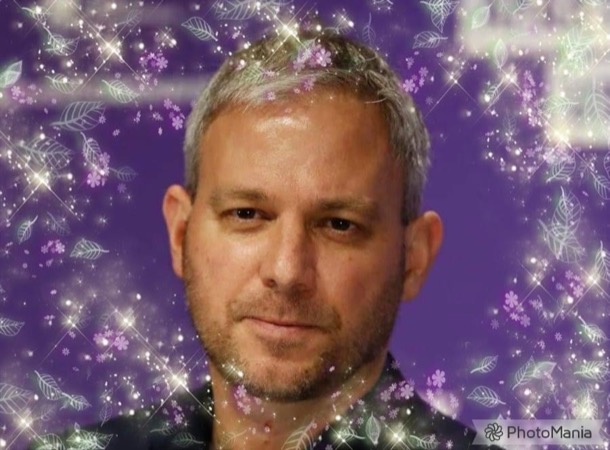

Click and Collect
Business and customers adapted quickly to commerce during a pandemic. After ordering online, shoppers could choose home delivery, or the new “click and collect”, where their purchases were waiting for them at the front desk, or even put straight into their car boot.
Close contact
People designated ‘close contacts’ of a ‘case’ were required to self isolate for a set period of time. What it took to be a close contact, and how long they needed to isolate, varied between States, and changed over time.
Cluster
In major towns and cities, groups of cases tend to develop in particular areas. Epidemiologists call these ‘clusters’, which, along with a lot of other specialist words, became part of the common vernacular. Thus, in Victoria, there was the Shepparton cluster, the Black Rock cluster etc.
Community Transmission
While States of Australia were trying to eradicate the virus, there was a distinction drawn between people who caught the virus overseas, interstate, or whilst in quarantine, and those who caught it out in the community.
Contact Tracers
An army of specially trained communicators interviewed, often multiple times, people who had caught covid, to trace their movements and alert possible contacts. The development of QR codes and “checking in’ made this role less critical.
Contactless Delivery
A selling point for some businesses, was the ability to home deliver goods that had been purchased on line, without entering houses or being face to face with people. This became known as ‘contactless delivery’.
Coronacast
Dr Norman Swan, long term Medical Journalist with the ABC, began a daily podcast he called “Coronacast” during the first weeks of the pandemic. In it he answered questions, explained medical terminology, and provided commentary on the pandemic. It became essential daily listening.
Coronavirus
Sars stands for Severe Acute Respiratory Syndrome. Sars-Cov-2 is the virus that causes the disease Covid-19. The ‘corona’ refers to the halo of spike proteins that surrounds the virus.
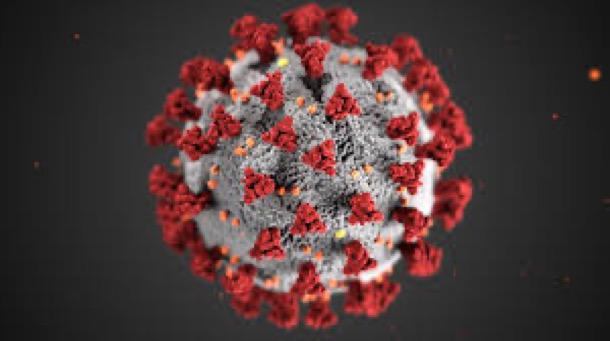
Covid Response Commander
Jeroen Weimar had transformed Melbourne’s public transport system, as its Chief Executive. As the ‘test and trace’ processes in Victoria struggled during its first wave, Premier Dan Andrews turned to this no nonsense logistics expert. Jeroen brought ten of his trusted colleagues from Public Transport and fixed Victoria’s Covid Response processes. He became a popular public figure by fronting many press conferences and answering questions in his rapid fire, no nonsense style.
Covid Normal
Always just around the corner, and, so far, always stymied by yet another new variant, a “Covid Normal” life is the precursor to “living with the virus”. It meant not being officially locked down, but having some legal restrictions on normal life.
Covidiot
Those who behave idiotically during the pandemic, especially flouting the restrictions. The term was largely replaced by “antivaxxer”, once the vaccines were available.
Curfew
At the height of its fight to reach Covid Zero, in order to help police restrictions, and limit movement, the Victorian government imposed a 9pm curfew on all but essential workers. Other parts of the world had used this measure successfully. It made Melbourne a very, very quiet place.
Dan-stans
The “stans” are the countries of Central Asia that were mostly part of the Soviet Union, and remained under Russian influence after independence. Using the term with Dan in front of it links Victoria, under Premier Dan Andrews, with these near dictatorships. It suggests that Victoria is a dictatorship. “Dictator Dan” became a term of abuse levelled at the Premier during pandemic lockdowns.
Deep Cleaning
Early on in the pandemic, it was thought that, like colds and flu, the Covid virus was transmitted through droplets, which could settle in a room and remain a source of contagion for days. When transmission had occurred in a venue it was ‘deep cleaned’ to remove any traces of virus.
Diamond Princess
This cruise ship was the source of Australia’s first wave of infections. Passengers were allowed to disembark at Sydney, and travel on to all parts of Australia, taking the virus with them. There were questions about who made this decision, and an inquiry was held. Cruise ships, with their closely quartered populations, and inadequate air flow, turn out to be perfect breeding grounds for this virus.
Doomscrolling
The 2020 Macquarie Dictionary word of the year, Doomscrolling refers to the practice of continuing to read news feeds online, even though it is depressing, and endlessly negative.
Donut Day, Double Donuts (put on emojis)
During the early waves of the pandemic, in Victoria, we watched with interest, the daily infection numbers. For a long time, the first place go find them out was the daily Press Conference. And then, magically, they began to be a lower number each day. We waited for the magic zero cases. When it happened, it came known as donut day. Cafes across Melbourne sold out of donuts. and no new cases, no new deaths became a "double donut day”.
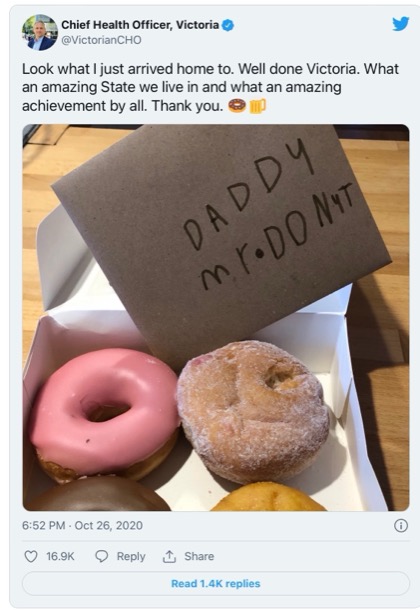
Double Vaxxed/Triple Vaxxed/Fully Vaxxed
Having had two, and later three vaccination doses, which allowed people to access some elements of the community, closed to the unvaccinated. eg “I’m fully vaxxed”, cited as a badge of honour in some circles.
Effective Reproduction Number
The Basic Reproduction Number (R) refers to the transmission potential of a virus in a population with no immunity. It is used in the calculation of the Effective Reproduction Number (Reff ) The Reff refers to the average number of secondary cases per infectious case in the current population, where there will be some immunity. This is a more complicated calculation, but is important as it tells the Health Department, in real time, how many people are likely to be infected by each positive case of Covid-19. When the number is high, the virus spreads faster. If the Reff is 1, case numbers will remain stable and if it is less than 1, the case numbers will drop.This is important information that assists Government in planning a response to any infectious disease outbreak, not just Covid-19.
Epidemiology
Epidemiology is the scientific study and analysis of the distribution patterns of a disease ( how when and where). World wide epidemiologists have been an integral part of the fight against the Covid 19 Pandemic. Using data and analysis, they have informed and advised governments, influenced policy and made recommendations on preventative measures.
The term Epidemiology of the Day also entered the lexicon at the daily Victorian press conferences, during the first and second waves. It referred to the distribution and case numbers and then morphed to include hospitalisations and eventually vaccination rates.
Essential Workers
Essential workers are those deemed by the government to be vital for the continued safety and care of the population. It included workers involved in food production, processing and distribution, and workers required to keep supply chains functioning. It also included anyone involved in healthcare, from the hospital administration and doctors and nurses, to the cleaners and orderlies. The role of truck drivers was also appreciated and they received toots and waves from a grateful population at the height of the first wave, as the importance of their role became obvious.
Exposure site
Exposure site refers to any site, other than a private dwelling, where there has been infections reported. It could include work places, schools, public transport, shops etc.
Flatten the Curve
We became very used to looking at graphs of infection rates, especially during the early stages of the various waves of infection. During periods of exponential growth the graph headed skywards in an almost vertical line. Each day we looked anxiously for signs of a more gradual increase in the number of cases. This created a flatter curve, as the graph eventually headed down.
Fleeting contact/transmission
This term refers to fleeting non physical contact that can result in transmission of the virus. The term became an issue during the Delta wave as the virus had become more transmissible but it was difficult to validate. The conservative press and Opposition were keen to use it as a political football in order to discredit the CHO and Victorian Government’s handling of the crisis.
Flexible working
During the pandemic one of the health orders imposed to limit movement and contact was, ‘if you can work from home you must work from home’. Despite some unfortunate consequences, such as social isolation and difficulties for working parents also coping with home schooling, working from home was popular. Long term changes in how, where and when work is done are emerging, as flexible working is embraced. In the future, fewer hours will be spent in the office and more meetings and conferences will be on Zoom. The ramifications are already evident in empty CBD office towers, less traffic at peak hour, fewer interstate flights, and in an outer suburb, country and coastal real estate boom. People are realising they do not need to live close to work.
Freedom Day
Freedom Day was a term coined by UK Prime Minister Boris Johnson. Monday, July 19th 2021, was the day Boris invited citizens to ‘take back their freedoms’. It was the end of laws mandating wearing of masks and enforcement of social distancing. All businesses re-opened, including nightclubs and at midnight parties erupted all over the country and many partied all night.
Fully Vaxxed
Fully vaxxed refers to what is deemed at the time, to be the optimum dosage of Covid vaccine. At first it was two doses, but as more real life data emerges as well as new very transmissible variants, three doses is becoming the recommended dose, as it is in Victoria now.
Genomic Sequencing
This term is not specific to the pandemic of course, but we grew to learn all about it, as different variants of the virus began to appear. It does, of course, refer to the scientific process whereby the genetic makeup of a living thing can be determined. During the pandemic it has been the means of charting the major and minor genetic changes to the virus.
Get on the beers
When restrictions came into force, and people were getting used to the restricted life, an illegal dinner party was discussed at the daily press conference. Premier Dan Andrews admonished people for having mates around for drinking parties. His words were made into hilarious remix by a Brisbane duo, Mashd N Kutcher, which became one of 2020’s hottest 100 hits.
Being able to finally get on the beers, became a special Victorian celebratory phrase.on the first donut day, although Dan did say at his press conference that day, that he “might be going a bit higher up the shelf”.
https://www.youtube.com/watch?v=7hOK5JF5XGA
Hard Border
In a pre pandemic world, defence forces manning border outposts at state borders seemed impossible. We grew used to it: long lines of vehicles at the Murray River bridge, Border passes, exemptions, police number plate checks were all part of our ‘hard borders’. In 2020, we even had hard borders separating the Melbourne metropolitan area from regional Victoria.
Health Care Workers (HCW)
Of course we had nurses, doctors, ambulance drivers (‘ambos&rsquo etc before the pandemic, but, suddenly their work became the coal face. There was world wide focus on hospitals. During the first wave, as cases mounted, it became customary in many cities around the world to come outside at a set time, on balconies and streets, and bang pots and pans in recognition of their work, and to applaud new shifts on their way into the hospital. These ones are in Madrid:
etc before the pandemic, but, suddenly their work became the coal face. There was world wide focus on hospitals. During the first wave, as cases mounted, it became customary in many cities around the world to come outside at a set time, on balconies and streets, and bang pots and pans in recognition of their work, and to applaud new shifts on their way into the hospital. These ones are in Madrid:
https://www.youtube.com/watch?v=5MIjynl6nYc
Herd Immunity
This is a term long used in epidemiology. It’s how most vaccines usually work. Enough of the population have antibodies protecting them from a disease, to protect the vulnerable: the young, the old and the immunocompromised. There is some evidence now that this may remain an epidemic disease where we never actually reach herd immunity, but have waves of infection, and variants remain a constant threat.
Home/Hotel Quarantine
People in quarantine isolate either at home, or at a “quarantine hotel”, which were repurposed, empty city hotels. Early on in the pandemic, people coming into the country had to quarantine for fourteen days at a special hotel. Victoria’s “first wave” happened because of a leak from a quarantine hotel. It was a huge scandal, and became very political.
Hotspot
An area where there was a lot of Covid was known as a “hotspot”. It could be as small as a shopping centre and as large as a group of suburbs. They were publicised so that people could be alert to symptoms, if had they been nearby, and keep away from them in future.
Household Contact
The most likely place people might catch Covid is from people they live with. If you had a “positive” member of your household, you automatically became a "household contact”, and thus had to be tested, and isolate for a set period of time.
Howard Springs
This area of Darwin had been an army base. It has many stand alone little huts, perfect for keeping a lot of people separated from each other, and from the general public. It has been used extensively for people coming from overseas, and it became the model for other new quarantine centres.
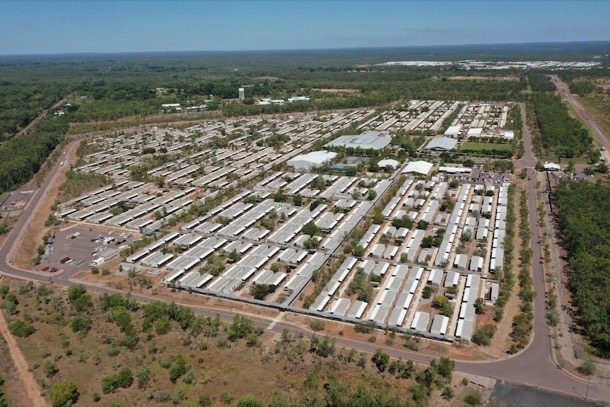
Hydroxychloroquine
This was an older longstanding treatment for malaria. In early 2020 it was trialed, unsuccessfully as a treatment for Covid 19. The reporting around its use was unskilful and it became politicised especially in Trump’s America. Hydroxychloroquine slipped into the revamped culture wars and their conspiracy theories, where it remains to this day.
ICU
This stands for Intensive Care Unit. The number of patients in hospital, in ICU and on a ventilator has become a measure of how problematic a covid wave is.
Index Case
This is an epidemiological term. An outbreak in a given area begins somewhere. Extensive contact tracing enables outbreaks to be traced back to the first person to catch it. This is the “index case”. It became a political blame game to find the index case and what led to their catching it.
Infectious Period
A medical and epidemiological term. It refers to the days during which a case can pass the virus on to others.
Intimate Partner
During Lockdown, the plight of partners (friends with benefits) who do not live together needed to be dealt with. It became grounds for home visits, that were otherwise disallowed. A hilarious Press Conference where Premier Dan Andrews explained the rules, led to his reflection that he never considered that this conversation would be part of his job.
Intubated/Ventilated
The really horrible truth about severe Covid is that people are treated by having a machine breath for them. They have to be sedated for this and usually lie on their fronts. The tube down into their lungs often caused lasting damage to their throat or vocal folds. A daily number of people in each State in this situation has been reported as a measure of the severity of an outbreak.
Iso
There is a particularly Australian propensity for shortening and lengthening familiar words and names. Thus “isolation” becomes “iso”, as in “He’s in iso at home”.
It’s Not a Race
Prime Minister Scott Morrison did not order enough vaccines, nor did he have a usable plan for mass vaccination. He excused his inadequacy with this oft repeated phrase “It’s not a race, it’s not a competition”. It came back to haunt him when the Delta wave hit, and there was a rush to get vaccinated. Especially when it became clear that he had favoured NSW with vaccines and vaccination places, over the other States.
Ivermectin
Ivermectin is a veterinary worming medicine given to horses. Its use against Covid began in South Africa and many third world countries, in spite of evidence that it is not effective. Once the FDA in America and ATAGI in Australia warned against its use, it became adopted, like Hydroxychloroquine before it, as the darling of right wing conspirators.
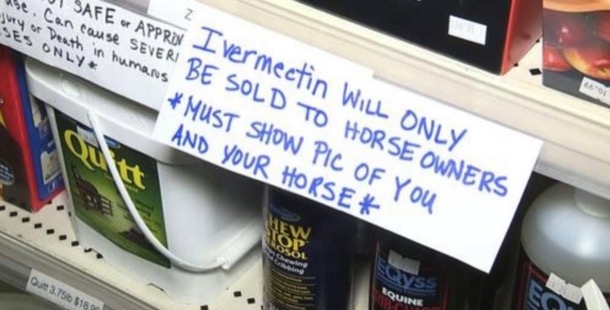
Jab, jabbed, double jabbed, triple jabbed
Shorthand for having had the vaccine. Interchangeable with “vaxxed”.
Job Keeper, Job Seeker
During the first Lockdown, when so many people lost their jobs, or had much reduced hours, government assistance was provided. Job Keeper was given via employers which maintained employer/employee relationships, so that, when the economy “bounced back”, those jobs were still there.
Job Seeker replaced unemployment benefits for a while. The requirements to work as a volunteer, or apply for a set number of jobs per week, were dropped.
Karen
Wikipedia says “Karen is a pejorative term for a white woman perceived as entitled or demanding what is above the scope of what is normal”. Its use grew during the early months of the pandemic. In Victoria, it first came to general attention with a woman from Brighton, a wealthy suburb, complaining about being confined to the five kilometre limit because she had already walked around all the streets of Brighton. The label grew with a woman refusing to wear a mask in a Bunnings store and filmed arguing with a hapless employee.
Let it Rip
This has become synonymous with a government policy of not having any restrictions on movement, gathering, mask wearing etc. The sentiment presupposes that a particular population will eventually acquire herd immunity through most people becoming infected with the virus.
LGAs of Concern
This term is part of Sydney’s Covid history. During their Delta wave, the least wealthy Local Government Areas had the most infections. The kind of jobs people in those areas had couldn’t be done at home, and poverty made continuing to work essential. The LGAs of Concern suffered more Police patrols, curfews and greater lockdowns than the rest of Sydney.
Locally-acquired cases
In the beginning of the pandemic in Australia, the only source of infection were visitors from overseas. Eventually there was “community transmission”, people in the community catching it from other people in the community. These became known as “locally acquired cases”.
Lockdown
We first saw legally enforced stay at home orders in our News Bulletins, when people in the Chinese city of Wuhan, where the virus was first discovered, had their doors welded shut to keep them in. This was followed quite soon with footage of deserted Italian cities, and people forced to stay inside their homes. Little did we know! We are completely acclimatised to “lockdown” now, even though it has become very politicised, and may never be used in Australia again.
Lockdown Light (Lite)
This term grew out of the rivalry between Victoria and NSW. The NSW government did not introduce the strict lockdowns we saw here in Victoria. Their limited restrictions were contemptuously ridiculed.
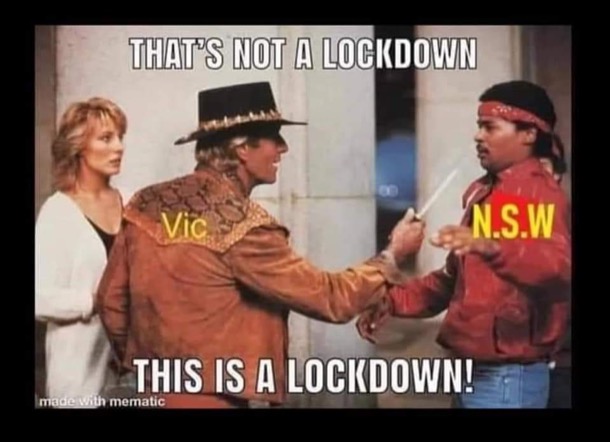
Lockout
After vaccinations became widespread, and eventually compulsory in certain industries, only those who were fully vaccinated could participate fully in the opened up economy. These were known as vaccine mandates. The Premier’s message became, “We’re not going to “lockdown” the economy, we’re going to “lockout” those who refuse to get vaccinated.”
Long Covid
Over time it became obvious that a sizeable proportion of those who had even mild disease, still had symptoms long after the acute phase had passed. “Brain fog”, fatigue, and a range of other symptoms last months and even years. This has become known as “long Covid”.
N95
An N95 mask is a mask that has 3 layers and fits securely around the face. If properly fitted, it filters 95% of airborne particles. During the Omicron outbreak they became widely available to the public as this variant was so transmissible. N95 masks are also worn by frontline workers and, in this scenario, have to be specially expertly fitted.
National Cabinet
National Cabinet was established in March 2020 in response to the pandemic, and replaced COAG for the duration of the crisis. It was composed of the State Premiers, the Chief Ministers and Prime Minister. Initially, National Cabinet was able to work collaboratively on crisis management, but unfortunately, politics and individual agendas made the group less effective and able to make good decisions.
Negative Result
Negative result became the term we all wanted to hear after a PCR or RAT test. It became shorthand for, “I don’t have COVID”.
New Normal
Towards the end of 2020 and Victoria’s first big wave the Premier Daniel Andrews, began to talk of opening up at Christmas. He warned the life would not return to normal, but that it would be a “Covid normal”. This term morphed into “new normal” and was widely used.
North Face
During Victoria’s longest and strictest lockdown in 2020 Premier Danial Andrews held daily Press conferences where he often wore his North Face jacket. Our lives had shrunk so much and the daily press conference was such a feature of our day, that the appearance of the North Face jacket prompted much hilarious activity on Twitter and, in the Press, speculation on its symbolism.
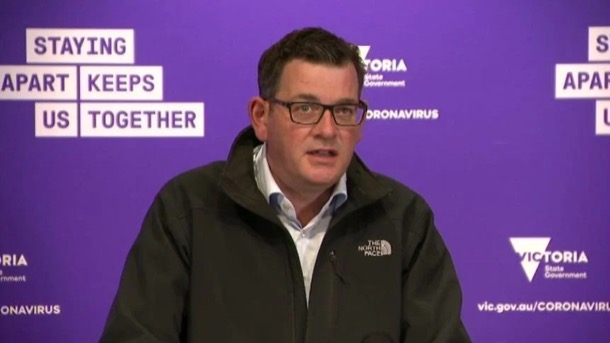
Online Learning
During the lockdowns when schools were closed, remote learning of course meant on line learning. There was great discrepancy, mostly socio economic based, between different schools. Many teachers worked very hard to not only teach content, but also to help their students cope with the isolation. The Victorian Government provided IPads to disadvantaged children, in an attempt to level the playing field. Inevitably, some children emerged with gaps in their learning, that was addressed by employing extra tutors.
Pandemic
A pandemic is a disease that is prevalent world wide, rather than an epidemic that is restricted to a region or one area.
PCR Test
PCR means polymerase chain reaction. It is a test to detect genetic material from a specific organism, such as the SARS-CoV-2 virus. PCR testing stations were established and run by State Governments. As such large numbers of tests were required drive through testing stations appeared in many suburbs and during the height of the waves long queues of cars were very evident.
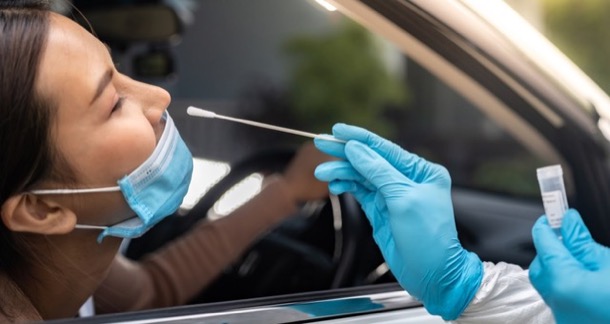
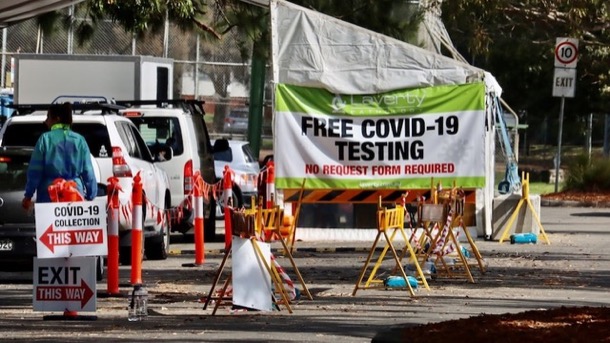
Pfizer
Pfizer is a world wide pharmaceutical company. Pfizer was amongst a number of companies who used RNA technology in the Covid vaccine.This technology uses a piece of genetic code of the virus to give instructions to cells in the body to make antigens and trigger an immune response. The advantage of this technology in vaccine manufacture, is that it can be easily adapted for changes in the Covid virus or indeed for other viruses that may emerge. In real world use, it has proven to also protect against severe disease.
PPE
PPE refers to the personal protective equipment usually associated with operating theatres. During the pandemic it was worn by anyone on the front line, in contact with infected people. N 95 masks, face shields, surgical gloves and plastic gowns were now commonplace.
Presser
This is shorthand for Press Conference. The Victorian Premier Daniel Andrews and his daily Presser, during Victoria’s waves of infection, became an essential part of our lives during lockdown. These Press Conferences differed from the norm as they were important information sessions using the experts involved in decision making, including of course the Chief Health Officer.. Another new aspect was the extent of the audience. The daily presser for us, was a shared experience with much communication by text.
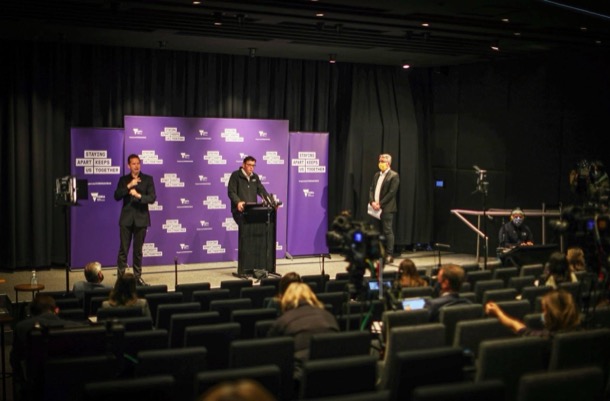
Public Health Orders
These are legally enforceable orders made by the CHO and signed by the Premier. They included items such as mandatory mask wearing, density limits and curfews.
QR Code
QR stands for Quick Response Code and consists of a black pattern of squares on a white background that can be read by a camera. It was used during the pandemic to track people to facilitate tracing and the TTIQ strategy (test, trace, isolate, quarantine). It was also used to check vaccination status that was required for access to some venues, for instance inside dining and non essential retail.

RATS
Rapid Antigen Tests (Rats) are what Australians call Lateral Flow tests. The acronym has slipped so quickly into our vocabulary, that we hardly stop to think what the letters stand for. When the “Omicron wave” first hit, and numbers of cases rose very rapidly, there was a shortage of Rats, and huge demand on the PCR testing facilities. Eventually the supply increased, and the Government accepted notification of a positive Rat as evidence of infection. Most of the community pays for their own Rats, but schools and many businesses have a temporary program of handing them out for regular testing.

Remote Learning
During the lockdowns, schools used the internet to continue schooling for kids. This is different from “home schooling’, where parents are responsible for the curriculum and its delivery. However, many parents, trying to work from home, and supervise their children’s lessons at the same time, found it just as much work.
Ring of Steel
During Victoria’s biggest lockdown, Greater Melbourne was separated out from the rest of Victoria, which had fewer restrictions. This “ring of steel” around Melbourne was maintained through Police checkpoints on major highways, demands from rural businesses to see customers' addresses, spot checks on number plates and pleas from the premier to protect regional Victoria.
Scomicron/Domicron
Prime Minister Scott Morrison (Scomo) wore a lot of blame for various aspects of the pandemic: not ordering enough vaccines, the state of Aged Care facilities, opposing State based regulations etc. At heightened times of blame during the “Omicron” wave, he was dubbed “Scomicron”.
When Dominic Perrottet replaced Gladys Berejiklian as NSW Premier, and he was held responsible for the huge wave of Omicron infections in his own and neighbouring states, Domicron as a nickname was impossible to resist.
Self Isolation
The act of putting oneself in home quarantine, without being forced to and without being monitored by the authorities. This term also covers people who have chosen not to go back to participating in normal society while the chance of infection remains.
Singles Bubble
During the long lockdowns, it became obvious that people who lived alone were suffering greatly from the isolation. The rules were tweaked so that people could meet one other under strict conditions, to ease the loneliness. This became known as forming a “singles bubble”.
Social Distancing
This term has become synonymous with keeping oneself separated from other people. For instance, the official advice might suggest that masks should be worn, “when you can’t socially distance”. The practice of shaking hands, or hugging, transformed into touching elbows in some circles. This became an ostentatious way of “being careful”.
Super Spreader Event
Quite early on in the pandemic, it became obvious that not everyone who caught Covid, passed it on, but that a few people passed it on prolifically. They were called “super spreaders”, who had a large “viral load”. Events where many people caught it from one infected individual became known as Super Spreader events.
Travel Bubble
As numbers eased at various times, it became possible to allow limited travel between states and even countries. For instance, a Trans-Tasman bubble allowed tourists to travel between New Zealand and Australia.
TTIQ
Once a specialised epidemiological phrase, TTIQ stands for test, trace, isolate, quarantine
V shaped recovery
During the pandemic we became very adept at reading lists of figures, graphs, etc. In most of Australia, chasing “Covid Zero”, we were always looking forward to the end of particular waves. “Recovery” meant case numbers dropping. When they grew and dropped very fast, the graph looked like an inverted V.
Vaccine Efficacy
When the vaccines were first appearing, there was much discussion and argument about them. People who had never asked questions about the origin, manufacturing process, duration of their vaccines before, became “experts”. One of the catch phrases that became part of our new vocabulary was “vaccine efficacy”.
Vaccine Hesitancy
Some people decided the vaccine wasn’t for them. Others decided to wait for a particular brand, Novavax, with old, well tried technology. It became, over time, a very divisive issue. We learnt to distinguish between anti vaxxers, many of whom embraced a variety of conspiracy theories, and those just wary of new vaccines: the hesitant.
Vaccine Hub
The State Governments took on much of the mass vaccination program, which became known as the “vaccine rollout”. A specially trained workforce was skilled up for this program. They established huge facilities, many of them drive through, for people to have their first, second and later on, third vaccine injections. These were often tent sites, in large car parks, municipal facilities, churches, schools, even football clubrooms. The larger sites were known as “vaccine hubs”.
Vaccine Passport
Once all sectors of the community had had the opportunity to be vaccinated, it became mandatory to be fully vaccinated, to participate fully in various activities. To help the people who had to police this, a mostly digital certificate was created, and attached to an app. So, once it was set up, all one had to do to show one's “vaccine passport” to a restaurant or shopkeeper, was to bring it up on one’s phone and show the big green tick.
Variants
Many of the virus’ variants came from mutations in the virus' spike protein.
The first variant was initially detected in the UK in November 2020. The WHO decided to name the new mutations using the letters of the Greek alphabet to avoid stigmatising the country of origin. Thus this “UK variant” became Alpha. During the second half of 2021, we had global waves of the Delta variant, which was more infectious again and far more virulent. The 2022 variant, Omicron, has increased infectivity, but not severity of illness.
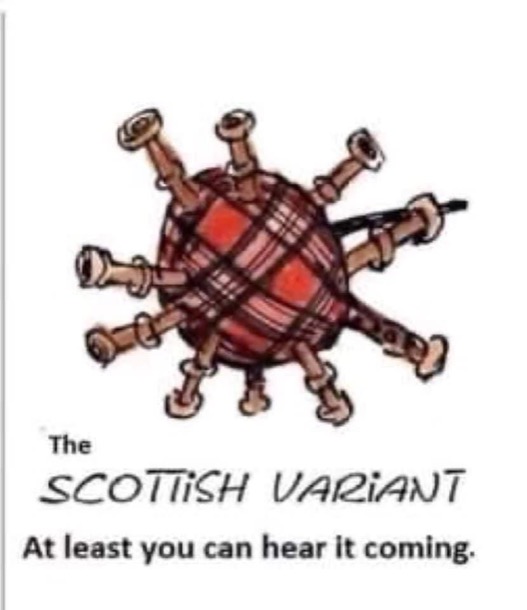
Viral Shedding
Over time we have learnt a lot about viruses. One of the terms we have learnt, along with “viral load”, is “viral shedding”. Once someone has recovered, and no longer infectious, there might still be dead viruses that trigger the various tests. They might still be “shedding” the virus for weeks, after recovering.
Wastewater Testing
The “shed” viruses, including broken up ones, or “viral fragments”, along with live, active viruses can be detected in all bodily fluids. Governments can monitor the presence or absence if Covid 19 in particular communities, by testing their sewage systems. Reporting the findings of such tests became part of daily information sessions. For example the residents of a particular area were advised to monitor symptoms more vigilantly, if virus was detected in their wastewater.
WHO, World Health Organisation
The WHO is a specialised agency of the United Nations responsible for international public health. They make statements, and run programs relating to global health matters. For instance they administer COVAX, a program aimed at vaccinating all peoples of the world against Covid 19.
Work from Home
“Those who can work from home, must work from home” was part of the lockdown orders. As people “returned to the office”, many chose to spend at least part of the week continuing to work from home. The social and economic implications remained: people had to be coax “back to the CBD”, many decided to move out of addresses closer in to the city, and adopted outer suburban and regional lifestyles.
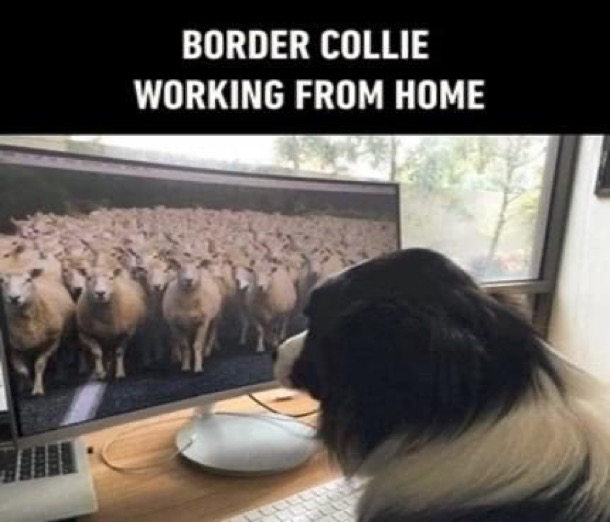
Zoom
An app that allows groups of people to “meet” remotely, to see and hear each other. It was a perfectly placed product as the world locked down. Zoom was used for everything from “viewing parties”, family get togethers, work meetings, classes and rehearsals to grannies reading a story to a child. Zoom meetings took on their own special culture. “You’re on mute”, “mute yourself”, “she’s in the waiting room”, The image that comes to mind is a computer screen divided into little squares, each with a badly lit head and shoulders sitting at a desk.
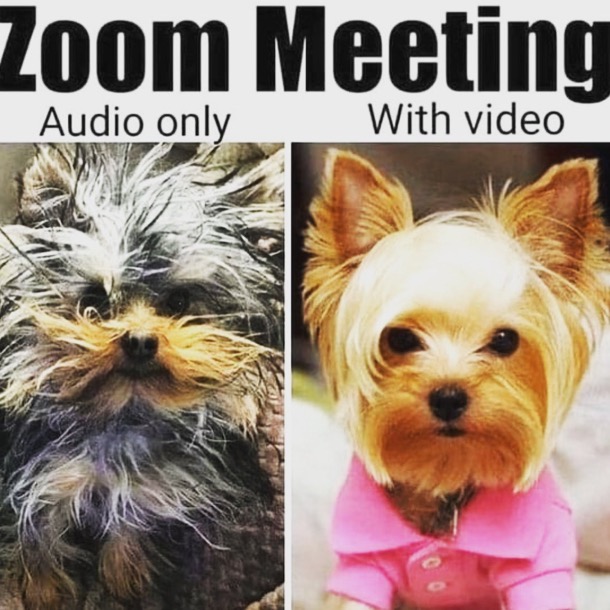
April 2022
With the Omicron wave reaching its peak in Australia, we have high vaccination rates and are now well and truly ‘living with the virus’. This means that, except for the vulnerable, and that include us over seventies, the general population are more or less living normal lives. There are still restrictions for the unvaccinated. They still cannot enter restaurants or theatres for instance. Isolation and stay at home orders now only apply to close contacts of a positive case, the definition of which is four hours or more close contact. Although mask wearing is no longer universal, masks are still required on public transport, and in aged care and hospitals. Retail staff, teachers and students are also still required to wear masks indoors.
As we end this post, we live in a changed world. Some adults and children have been left with mental and emotional scars and many people of all ages are living with long Covid, that is still little understood. Many families are also mourning their dead, and hospital wards remain under stress. The “work from home” phenomenon has been embraced by many and empty offices are still commonplace in the CBD.
The SARS-CoV-2 virus is probably here to stay. It will continue to evolve and we will continue to adapt.
Watch this space.
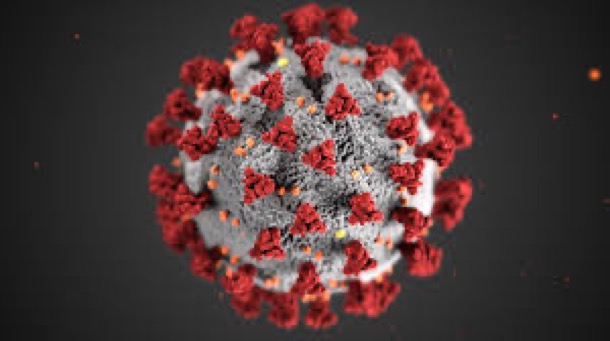
The world did indeed change, and the “year of Covid” is entering its third year. Turns out, Global pandemics don’t magically melt away, even when we triple vaccinate the wealthy nations.
So Sue and I are taking a new approach to our documentation of this chapter of our lives. Extended periods of shared experiences tend to generate their own vocabulary.
Here then is our annotated vocabulary of the Covid-19 pandemic in Victoria, Australia.
5/10 km limit
During Melbourne lockdowns 5 and 10 kilometre limits were introduced to reduce mobility and therefore the spread of the virus. Online tools were published to allow people to work out their permitted radius and movement from their home address.
Active cases
People with Covid who are still infectious.
Aerosol Transmission
Refers to the transmission of the virus by small liquid droplets carried in the air, in a cloud. Governments around the world and even the WHO were slow to accept expert opinion that Covid 19 was primarily spread by airborne transmission, as this had expensive ramifications for attempts to control spread of the virus.
Anti Masker
This refers to people who refused to wear masks. They saw it as an infringement of their personal freedom and often part of a bigger conspiracy by the State to wrest control from individuals. Exemptions for health reasons were available from GPs but only for a very limited range of conditions. Fines were imposed for non mask wearing.
Armchair Epidemiologist
There has been no shortage of ‘experts’ who have no expertise, experience or training, offering up their pearls of wisdom to anyone who will listen.
AstraZeneca (AZ)
The AstraZeneca vaccine was developed in the UK by an Oxford research team in 2020. It uses a weakened animal virus , chimpanzee adenovirus, called a viral vector, that contains the genetic code for the spike protein. Once it enters the body, it tells the cells to make copies of the spike protein. The immune cells recognise the spike protein as a threat and begin building a response to it.
AstraZeneca has been a very successful and useful vaccine, despite the bad press it received, due to a rare clotting side effect. Immunity does wane over time but it still protects from severe disease.
ATAGI
The Australian Technical Group on Immunisation is a Federal Government body that provides expert advice and recommendations to the Health Minister and the TGA (Therapeutic Goods Administration). ATAGI, probably not a household word pre pandemic, was now spilling from the mouths of politicians and very much in the public eye. Their role in determining which vaccines were safe was now of vital interest to young and old.
Booster
The vaccines we are currently using in Australia, all need a third dose, and even fourth, to avoid failing effectiveness over time. This has become known as being boosted.
Border Bubble
States with differing levels of infection have closed their borders to each other at different times. Border communities that share facilities have been allowed to cross State borders within a defined area called a Border Bubble.
Border Checkpoint
Police and Defence Force personnel checked people’s passes during times of Border closure. Lines of cars and trucks and ad hoc overnight camping spots, became the norm.

Bubble buddy
During the long second wave lockdown, the mental health of people who lived alone became a concern. To ease the isolation, people were allowed to nominate a bubble buddy, with whom they could spend time, albeit within strict guidelines. When this began to include life partners who lived in different houses, the Premier tied himself in hilarious verbal knots trying to explain the rules.
Casual Contact
Strangers who have the possibility of infecting each other, just by being in the same place, at the same time.
Check in
The technology of QR codes became the solution for knowing who could have been infected in a particular time and place. “Checking in”, using a government developed app on one’s smart phone, became an act of community minded altruism, and, later, a quick way of demonstrating one’s vaccination status.
Chief Health Officer
Professor Brett Sutton has been Victoria’s Chief Health Officer since March 2019. By the time he had appeared at a few Covid Press Conferences, he became very well known to Victorians. Quite quickly, the title became shortened to the “CHO”. CHOs of other states were also very public figures.
In Victoria, from the beginning of the pandemic until later 2021, when the powers were curtailed, the CHO had the legal power to order all sorts of restrictions.
CHOttie
Brett Sutton is an attractive man. He generated a lot of swooning, a lot of memes, a Facebook fan club and even some ‘merch’.


Click and Collect
Business and customers adapted quickly to commerce during a pandemic. After ordering online, shoppers could choose home delivery, or the new “click and collect”, where their purchases were waiting for them at the front desk, or even put straight into their car boot.
Close contact
People designated ‘close contacts’ of a ‘case’ were required to self isolate for a set period of time. What it took to be a close contact, and how long they needed to isolate, varied between States, and changed over time.
Cluster
In major towns and cities, groups of cases tend to develop in particular areas. Epidemiologists call these ‘clusters’, which, along with a lot of other specialist words, became part of the common vernacular. Thus, in Victoria, there was the Shepparton cluster, the Black Rock cluster etc.
Community Transmission
While States of Australia were trying to eradicate the virus, there was a distinction drawn between people who caught the virus overseas, interstate, or whilst in quarantine, and those who caught it out in the community.
Contact Tracers
An army of specially trained communicators interviewed, often multiple times, people who had caught covid, to trace their movements and alert possible contacts. The development of QR codes and “checking in’ made this role less critical.
Contactless Delivery
A selling point for some businesses, was the ability to home deliver goods that had been purchased on line, without entering houses or being face to face with people. This became known as ‘contactless delivery’.
Coronacast
Dr Norman Swan, long term Medical Journalist with the ABC, began a daily podcast he called “Coronacast” during the first weeks of the pandemic. In it he answered questions, explained medical terminology, and provided commentary on the pandemic. It became essential daily listening.
Coronavirus
Sars stands for Severe Acute Respiratory Syndrome. Sars-Cov-2 is the virus that causes the disease Covid-19. The ‘corona’ refers to the halo of spike proteins that surrounds the virus.

Covid Response Commander
Jeroen Weimar had transformed Melbourne’s public transport system, as its Chief Executive. As the ‘test and trace’ processes in Victoria struggled during its first wave, Premier Dan Andrews turned to this no nonsense logistics expert. Jeroen brought ten of his trusted colleagues from Public Transport and fixed Victoria’s Covid Response processes. He became a popular public figure by fronting many press conferences and answering questions in his rapid fire, no nonsense style.
Covid Normal
Always just around the corner, and, so far, always stymied by yet another new variant, a “Covid Normal” life is the precursor to “living with the virus”. It meant not being officially locked down, but having some legal restrictions on normal life.
Covidiot
Those who behave idiotically during the pandemic, especially flouting the restrictions. The term was largely replaced by “antivaxxer”, once the vaccines were available.
Curfew
At the height of its fight to reach Covid Zero, in order to help police restrictions, and limit movement, the Victorian government imposed a 9pm curfew on all but essential workers. Other parts of the world had used this measure successfully. It made Melbourne a very, very quiet place.
Dan-stans
The “stans” are the countries of Central Asia that were mostly part of the Soviet Union, and remained under Russian influence after independence. Using the term with Dan in front of it links Victoria, under Premier Dan Andrews, with these near dictatorships. It suggests that Victoria is a dictatorship. “Dictator Dan” became a term of abuse levelled at the Premier during pandemic lockdowns.
Deep Cleaning
Early on in the pandemic, it was thought that, like colds and flu, the Covid virus was transmitted through droplets, which could settle in a room and remain a source of contagion for days. When transmission had occurred in a venue it was ‘deep cleaned’ to remove any traces of virus.
Diamond Princess
This cruise ship was the source of Australia’s first wave of infections. Passengers were allowed to disembark at Sydney, and travel on to all parts of Australia, taking the virus with them. There were questions about who made this decision, and an inquiry was held. Cruise ships, with their closely quartered populations, and inadequate air flow, turn out to be perfect breeding grounds for this virus.
Doomscrolling
The 2020 Macquarie Dictionary word of the year, Doomscrolling refers to the practice of continuing to read news feeds online, even though it is depressing, and endlessly negative.
Donut Day, Double Donuts (put on emojis)
During the early waves of the pandemic, in Victoria, we watched with interest, the daily infection numbers. For a long time, the first place go find them out was the daily Press Conference. And then, magically, they began to be a lower number each day. We waited for the magic zero cases. When it happened, it came known as donut day. Cafes across Melbourne sold out of donuts. and no new cases, no new deaths became a "double donut day”.

Double Vaxxed/Triple Vaxxed/Fully Vaxxed
Having had two, and later three vaccination doses, which allowed people to access some elements of the community, closed to the unvaccinated. eg “I’m fully vaxxed”, cited as a badge of honour in some circles.
Effective Reproduction Number
The Basic Reproduction Number (R) refers to the transmission potential of a virus in a population with no immunity. It is used in the calculation of the Effective Reproduction Number (Reff ) The Reff refers to the average number of secondary cases per infectious case in the current population, where there will be some immunity. This is a more complicated calculation, but is important as it tells the Health Department, in real time, how many people are likely to be infected by each positive case of Covid-19. When the number is high, the virus spreads faster. If the Reff is 1, case numbers will remain stable and if it is less than 1, the case numbers will drop.This is important information that assists Government in planning a response to any infectious disease outbreak, not just Covid-19.
Epidemiology
Epidemiology is the scientific study and analysis of the distribution patterns of a disease ( how when and where). World wide epidemiologists have been an integral part of the fight against the Covid 19 Pandemic. Using data and analysis, they have informed and advised governments, influenced policy and made recommendations on preventative measures.
The term Epidemiology of the Day also entered the lexicon at the daily Victorian press conferences, during the first and second waves. It referred to the distribution and case numbers and then morphed to include hospitalisations and eventually vaccination rates.
Essential Workers
Essential workers are those deemed by the government to be vital for the continued safety and care of the population. It included workers involved in food production, processing and distribution, and workers required to keep supply chains functioning. It also included anyone involved in healthcare, from the hospital administration and doctors and nurses, to the cleaners and orderlies. The role of truck drivers was also appreciated and they received toots and waves from a grateful population at the height of the first wave, as the importance of their role became obvious.
Exposure site
Exposure site refers to any site, other than a private dwelling, where there has been infections reported. It could include work places, schools, public transport, shops etc.
Flatten the Curve
We became very used to looking at graphs of infection rates, especially during the early stages of the various waves of infection. During periods of exponential growth the graph headed skywards in an almost vertical line. Each day we looked anxiously for signs of a more gradual increase in the number of cases. This created a flatter curve, as the graph eventually headed down.
Fleeting contact/transmission
This term refers to fleeting non physical contact that can result in transmission of the virus. The term became an issue during the Delta wave as the virus had become more transmissible but it was difficult to validate. The conservative press and Opposition were keen to use it as a political football in order to discredit the CHO and Victorian Government’s handling of the crisis.
Flexible working
During the pandemic one of the health orders imposed to limit movement and contact was, ‘if you can work from home you must work from home’. Despite some unfortunate consequences, such as social isolation and difficulties for working parents also coping with home schooling, working from home was popular. Long term changes in how, where and when work is done are emerging, as flexible working is embraced. In the future, fewer hours will be spent in the office and more meetings and conferences will be on Zoom. The ramifications are already evident in empty CBD office towers, less traffic at peak hour, fewer interstate flights, and in an outer suburb, country and coastal real estate boom. People are realising they do not need to live close to work.
Freedom Day
Freedom Day was a term coined by UK Prime Minister Boris Johnson. Monday, July 19th 2021, was the day Boris invited citizens to ‘take back their freedoms’. It was the end of laws mandating wearing of masks and enforcement of social distancing. All businesses re-opened, including nightclubs and at midnight parties erupted all over the country and many partied all night.
Fully Vaxxed
Fully vaxxed refers to what is deemed at the time, to be the optimum dosage of Covid vaccine. At first it was two doses, but as more real life data emerges as well as new very transmissible variants, three doses is becoming the recommended dose, as it is in Victoria now.
Genomic Sequencing
This term is not specific to the pandemic of course, but we grew to learn all about it, as different variants of the virus began to appear. It does, of course, refer to the scientific process whereby the genetic makeup of a living thing can be determined. During the pandemic it has been the means of charting the major and minor genetic changes to the virus.
Get on the beers
When restrictions came into force, and people were getting used to the restricted life, an illegal dinner party was discussed at the daily press conference. Premier Dan Andrews admonished people for having mates around for drinking parties. His words were made into hilarious remix by a Brisbane duo, Mashd N Kutcher, which became one of 2020’s hottest 100 hits.
Being able to finally get on the beers, became a special Victorian celebratory phrase.on the first donut day, although Dan did say at his press conference that day, that he “might be going a bit higher up the shelf”.
https://www.youtube.com/watch?v=7hOK5JF5XGA
Hard Border
In a pre pandemic world, defence forces manning border outposts at state borders seemed impossible. We grew used to it: long lines of vehicles at the Murray River bridge, Border passes, exemptions, police number plate checks were all part of our ‘hard borders’. In 2020, we even had hard borders separating the Melbourne metropolitan area from regional Victoria.
Health Care Workers (HCW)
Of course we had nurses, doctors, ambulance drivers (‘ambos&rsquo
https://www.youtube.com/watch?v=5MIjynl6nYc
Herd Immunity
This is a term long used in epidemiology. It’s how most vaccines usually work. Enough of the population have antibodies protecting them from a disease, to protect the vulnerable: the young, the old and the immunocompromised. There is some evidence now that this may remain an epidemic disease where we never actually reach herd immunity, but have waves of infection, and variants remain a constant threat.
Home/Hotel Quarantine
People in quarantine isolate either at home, or at a “quarantine hotel”, which were repurposed, empty city hotels. Early on in the pandemic, people coming into the country had to quarantine for fourteen days at a special hotel. Victoria’s “first wave” happened because of a leak from a quarantine hotel. It was a huge scandal, and became very political.
Hotspot
An area where there was a lot of Covid was known as a “hotspot”. It could be as small as a shopping centre and as large as a group of suburbs. They were publicised so that people could be alert to symptoms, if had they been nearby, and keep away from them in future.
Household Contact
The most likely place people might catch Covid is from people they live with. If you had a “positive” member of your household, you automatically became a "household contact”, and thus had to be tested, and isolate for a set period of time.
Howard Springs
This area of Darwin had been an army base. It has many stand alone little huts, perfect for keeping a lot of people separated from each other, and from the general public. It has been used extensively for people coming from overseas, and it became the model for other new quarantine centres.

Hydroxychloroquine
This was an older longstanding treatment for malaria. In early 2020 it was trialed, unsuccessfully as a treatment for Covid 19. The reporting around its use was unskilful and it became politicised especially in Trump’s America. Hydroxychloroquine slipped into the revamped culture wars and their conspiracy theories, where it remains to this day.
ICU
This stands for Intensive Care Unit. The number of patients in hospital, in ICU and on a ventilator has become a measure of how problematic a covid wave is.
Index Case
This is an epidemiological term. An outbreak in a given area begins somewhere. Extensive contact tracing enables outbreaks to be traced back to the first person to catch it. This is the “index case”. It became a political blame game to find the index case and what led to their catching it.
Infectious Period
A medical and epidemiological term. It refers to the days during which a case can pass the virus on to others.
Intimate Partner
During Lockdown, the plight of partners (friends with benefits) who do not live together needed to be dealt with. It became grounds for home visits, that were otherwise disallowed. A hilarious Press Conference where Premier Dan Andrews explained the rules, led to his reflection that he never considered that this conversation would be part of his job.
Intubated/Ventilated
The really horrible truth about severe Covid is that people are treated by having a machine breath for them. They have to be sedated for this and usually lie on their fronts. The tube down into their lungs often caused lasting damage to their throat or vocal folds. A daily number of people in each State in this situation has been reported as a measure of the severity of an outbreak.
Iso
There is a particularly Australian propensity for shortening and lengthening familiar words and names. Thus “isolation” becomes “iso”, as in “He’s in iso at home”.
It’s Not a Race
Prime Minister Scott Morrison did not order enough vaccines, nor did he have a usable plan for mass vaccination. He excused his inadequacy with this oft repeated phrase “It’s not a race, it’s not a competition”. It came back to haunt him when the Delta wave hit, and there was a rush to get vaccinated. Especially when it became clear that he had favoured NSW with vaccines and vaccination places, over the other States.
Ivermectin
Ivermectin is a veterinary worming medicine given to horses. Its use against Covid began in South Africa and many third world countries, in spite of evidence that it is not effective. Once the FDA in America and ATAGI in Australia warned against its use, it became adopted, like Hydroxychloroquine before it, as the darling of right wing conspirators.

Jab, jabbed, double jabbed, triple jabbed
Shorthand for having had the vaccine. Interchangeable with “vaxxed”.
Job Keeper, Job Seeker
During the first Lockdown, when so many people lost their jobs, or had much reduced hours, government assistance was provided. Job Keeper was given via employers which maintained employer/employee relationships, so that, when the economy “bounced back”, those jobs were still there.
Job Seeker replaced unemployment benefits for a while. The requirements to work as a volunteer, or apply for a set number of jobs per week, were dropped.
Karen
Wikipedia says “Karen is a pejorative term for a white woman perceived as entitled or demanding what is above the scope of what is normal”. Its use grew during the early months of the pandemic. In Victoria, it first came to general attention with a woman from Brighton, a wealthy suburb, complaining about being confined to the five kilometre limit because she had already walked around all the streets of Brighton. The label grew with a woman refusing to wear a mask in a Bunnings store and filmed arguing with a hapless employee.
Let it Rip
This has become synonymous with a government policy of not having any restrictions on movement, gathering, mask wearing etc. The sentiment presupposes that a particular population will eventually acquire herd immunity through most people becoming infected with the virus.
LGAs of Concern
This term is part of Sydney’s Covid history. During their Delta wave, the least wealthy Local Government Areas had the most infections. The kind of jobs people in those areas had couldn’t be done at home, and poverty made continuing to work essential. The LGAs of Concern suffered more Police patrols, curfews and greater lockdowns than the rest of Sydney.
Locally-acquired cases
In the beginning of the pandemic in Australia, the only source of infection were visitors from overseas. Eventually there was “community transmission”, people in the community catching it from other people in the community. These became known as “locally acquired cases”.
Lockdown
We first saw legally enforced stay at home orders in our News Bulletins, when people in the Chinese city of Wuhan, where the virus was first discovered, had their doors welded shut to keep them in. This was followed quite soon with footage of deserted Italian cities, and people forced to stay inside their homes. Little did we know! We are completely acclimatised to “lockdown” now, even though it has become very politicised, and may never be used in Australia again.
Lockdown Light (Lite)
This term grew out of the rivalry between Victoria and NSW. The NSW government did not introduce the strict lockdowns we saw here in Victoria. Their limited restrictions were contemptuously ridiculed.

Lockout
After vaccinations became widespread, and eventually compulsory in certain industries, only those who were fully vaccinated could participate fully in the opened up economy. These were known as vaccine mandates. The Premier’s message became, “We’re not going to “lockdown” the economy, we’re going to “lockout” those who refuse to get vaccinated.”
Long Covid
Over time it became obvious that a sizeable proportion of those who had even mild disease, still had symptoms long after the acute phase had passed. “Brain fog”, fatigue, and a range of other symptoms last months and even years. This has become known as “long Covid”.
N95
An N95 mask is a mask that has 3 layers and fits securely around the face. If properly fitted, it filters 95% of airborne particles. During the Omicron outbreak they became widely available to the public as this variant was so transmissible. N95 masks are also worn by frontline workers and, in this scenario, have to be specially expertly fitted.
National Cabinet
National Cabinet was established in March 2020 in response to the pandemic, and replaced COAG for the duration of the crisis. It was composed of the State Premiers, the Chief Ministers and Prime Minister. Initially, National Cabinet was able to work collaboratively on crisis management, but unfortunately, politics and individual agendas made the group less effective and able to make good decisions.
Negative Result
Negative result became the term we all wanted to hear after a PCR or RAT test. It became shorthand for, “I don’t have COVID”.
New Normal
Towards the end of 2020 and Victoria’s first big wave the Premier Daniel Andrews, began to talk of opening up at Christmas. He warned the life would not return to normal, but that it would be a “Covid normal”. This term morphed into “new normal” and was widely used.
North Face
During Victoria’s longest and strictest lockdown in 2020 Premier Danial Andrews held daily Press conferences where he often wore his North Face jacket. Our lives had shrunk so much and the daily press conference was such a feature of our day, that the appearance of the North Face jacket prompted much hilarious activity on Twitter and, in the Press, speculation on its symbolism.

Online Learning
During the lockdowns when schools were closed, remote learning of course meant on line learning. There was great discrepancy, mostly socio economic based, between different schools. Many teachers worked very hard to not only teach content, but also to help their students cope with the isolation. The Victorian Government provided IPads to disadvantaged children, in an attempt to level the playing field. Inevitably, some children emerged with gaps in their learning, that was addressed by employing extra tutors.
Pandemic
A pandemic is a disease that is prevalent world wide, rather than an epidemic that is restricted to a region or one area.
PCR Test
PCR means polymerase chain reaction. It is a test to detect genetic material from a specific organism, such as the SARS-CoV-2 virus. PCR testing stations were established and run by State Governments. As such large numbers of tests were required drive through testing stations appeared in many suburbs and during the height of the waves long queues of cars were very evident.


Pfizer
Pfizer is a world wide pharmaceutical company. Pfizer was amongst a number of companies who used RNA technology in the Covid vaccine.This technology uses a piece of genetic code of the virus to give instructions to cells in the body to make antigens and trigger an immune response. The advantage of this technology in vaccine manufacture, is that it can be easily adapted for changes in the Covid virus or indeed for other viruses that may emerge. In real world use, it has proven to also protect against severe disease.
PPE
PPE refers to the personal protective equipment usually associated with operating theatres. During the pandemic it was worn by anyone on the front line, in contact with infected people. N 95 masks, face shields, surgical gloves and plastic gowns were now commonplace.
Presser
This is shorthand for Press Conference. The Victorian Premier Daniel Andrews and his daily Presser, during Victoria’s waves of infection, became an essential part of our lives during lockdown. These Press Conferences differed from the norm as they were important information sessions using the experts involved in decision making, including of course the Chief Health Officer.. Another new aspect was the extent of the audience. The daily presser for us, was a shared experience with much communication by text.

Public Health Orders
These are legally enforceable orders made by the CHO and signed by the Premier. They included items such as mandatory mask wearing, density limits and curfews.
QR Code
QR stands for Quick Response Code and consists of a black pattern of squares on a white background that can be read by a camera. It was used during the pandemic to track people to facilitate tracing and the TTIQ strategy (test, trace, isolate, quarantine). It was also used to check vaccination status that was required for access to some venues, for instance inside dining and non essential retail.

RATS
Rapid Antigen Tests (Rats) are what Australians call Lateral Flow tests. The acronym has slipped so quickly into our vocabulary, that we hardly stop to think what the letters stand for. When the “Omicron wave” first hit, and numbers of cases rose very rapidly, there was a shortage of Rats, and huge demand on the PCR testing facilities. Eventually the supply increased, and the Government accepted notification of a positive Rat as evidence of infection. Most of the community pays for their own Rats, but schools and many businesses have a temporary program of handing them out for regular testing.

Remote Learning
During the lockdowns, schools used the internet to continue schooling for kids. This is different from “home schooling’, where parents are responsible for the curriculum and its delivery. However, many parents, trying to work from home, and supervise their children’s lessons at the same time, found it just as much work.
Ring of Steel
During Victoria’s biggest lockdown, Greater Melbourne was separated out from the rest of Victoria, which had fewer restrictions. This “ring of steel” around Melbourne was maintained through Police checkpoints on major highways, demands from rural businesses to see customers' addresses, spot checks on number plates and pleas from the premier to protect regional Victoria.
Scomicron/Domicron
Prime Minister Scott Morrison (Scomo) wore a lot of blame for various aspects of the pandemic: not ordering enough vaccines, the state of Aged Care facilities, opposing State based regulations etc. At heightened times of blame during the “Omicron” wave, he was dubbed “Scomicron”.
When Dominic Perrottet replaced Gladys Berejiklian as NSW Premier, and he was held responsible for the huge wave of Omicron infections in his own and neighbouring states, Domicron as a nickname was impossible to resist.
Self Isolation
The act of putting oneself in home quarantine, without being forced to and without being monitored by the authorities. This term also covers people who have chosen not to go back to participating in normal society while the chance of infection remains.
Singles Bubble
During the long lockdowns, it became obvious that people who lived alone were suffering greatly from the isolation. The rules were tweaked so that people could meet one other under strict conditions, to ease the loneliness. This became known as forming a “singles bubble”.
Social Distancing
This term has become synonymous with keeping oneself separated from other people. For instance, the official advice might suggest that masks should be worn, “when you can’t socially distance”. The practice of shaking hands, or hugging, transformed into touching elbows in some circles. This became an ostentatious way of “being careful”.
Super Spreader Event
Quite early on in the pandemic, it became obvious that not everyone who caught Covid, passed it on, but that a few people passed it on prolifically. They were called “super spreaders”, who had a large “viral load”. Events where many people caught it from one infected individual became known as Super Spreader events.
Travel Bubble
As numbers eased at various times, it became possible to allow limited travel between states and even countries. For instance, a Trans-Tasman bubble allowed tourists to travel between New Zealand and Australia.
TTIQ
Once a specialised epidemiological phrase, TTIQ stands for test, trace, isolate, quarantine
V shaped recovery
During the pandemic we became very adept at reading lists of figures, graphs, etc. In most of Australia, chasing “Covid Zero”, we were always looking forward to the end of particular waves. “Recovery” meant case numbers dropping. When they grew and dropped very fast, the graph looked like an inverted V.
Vaccine Efficacy
When the vaccines were first appearing, there was much discussion and argument about them. People who had never asked questions about the origin, manufacturing process, duration of their vaccines before, became “experts”. One of the catch phrases that became part of our new vocabulary was “vaccine efficacy”.
Vaccine Hesitancy
Some people decided the vaccine wasn’t for them. Others decided to wait for a particular brand, Novavax, with old, well tried technology. It became, over time, a very divisive issue. We learnt to distinguish between anti vaxxers, many of whom embraced a variety of conspiracy theories, and those just wary of new vaccines: the hesitant.
Vaccine Hub
The State Governments took on much of the mass vaccination program, which became known as the “vaccine rollout”. A specially trained workforce was skilled up for this program. They established huge facilities, many of them drive through, for people to have their first, second and later on, third vaccine injections. These were often tent sites, in large car parks, municipal facilities, churches, schools, even football clubrooms. The larger sites were known as “vaccine hubs”.
Vaccine Passport
Once all sectors of the community had had the opportunity to be vaccinated, it became mandatory to be fully vaccinated, to participate fully in various activities. To help the people who had to police this, a mostly digital certificate was created, and attached to an app. So, once it was set up, all one had to do to show one's “vaccine passport” to a restaurant or shopkeeper, was to bring it up on one’s phone and show the big green tick.
Variants
Many of the virus’ variants came from mutations in the virus' spike protein.
The first variant was initially detected in the UK in November 2020. The WHO decided to name the new mutations using the letters of the Greek alphabet to avoid stigmatising the country of origin. Thus this “UK variant” became Alpha. During the second half of 2021, we had global waves of the Delta variant, which was more infectious again and far more virulent. The 2022 variant, Omicron, has increased infectivity, but not severity of illness.

Viral Shedding
Over time we have learnt a lot about viruses. One of the terms we have learnt, along with “viral load”, is “viral shedding”. Once someone has recovered, and no longer infectious, there might still be dead viruses that trigger the various tests. They might still be “shedding” the virus for weeks, after recovering.
Wastewater Testing
The “shed” viruses, including broken up ones, or “viral fragments”, along with live, active viruses can be detected in all bodily fluids. Governments can monitor the presence or absence if Covid 19 in particular communities, by testing their sewage systems. Reporting the findings of such tests became part of daily information sessions. For example the residents of a particular area were advised to monitor symptoms more vigilantly, if virus was detected in their wastewater.
WHO, World Health Organisation
The WHO is a specialised agency of the United Nations responsible for international public health. They make statements, and run programs relating to global health matters. For instance they administer COVAX, a program aimed at vaccinating all peoples of the world against Covid 19.
Work from Home
“Those who can work from home, must work from home” was part of the lockdown orders. As people “returned to the office”, many chose to spend at least part of the week continuing to work from home. The social and economic implications remained: people had to be coax “back to the CBD”, many decided to move out of addresses closer in to the city, and adopted outer suburban and regional lifestyles.

Zoom
An app that allows groups of people to “meet” remotely, to see and hear each other. It was a perfectly placed product as the world locked down. Zoom was used for everything from “viewing parties”, family get togethers, work meetings, classes and rehearsals to grannies reading a story to a child. Zoom meetings took on their own special culture. “You’re on mute”, “mute yourself”, “she’s in the waiting room”, The image that comes to mind is a computer screen divided into little squares, each with a badly lit head and shoulders sitting at a desk.

April 2022
With the Omicron wave reaching its peak in Australia, we have high vaccination rates and are now well and truly ‘living with the virus’. This means that, except for the vulnerable, and that include us over seventies, the general population are more or less living normal lives. There are still restrictions for the unvaccinated. They still cannot enter restaurants or theatres for instance. Isolation and stay at home orders now only apply to close contacts of a positive case, the definition of which is four hours or more close contact. Although mask wearing is no longer universal, masks are still required on public transport, and in aged care and hospitals. Retail staff, teachers and students are also still required to wear masks indoors.
As we end this post, we live in a changed world. Some adults and children have been left with mental and emotional scars and many people of all ages are living with long Covid, that is still little understood. Many families are also mourning their dead, and hospital wards remain under stress. The “work from home” phenomenon has been embraced by many and empty offices are still commonplace in the CBD.
The SARS-CoV-2 virus is probably here to stay. It will continue to evolve and we will continue to adapt.
Watch this space.

Comments
The Year of Covid
30 03 21 13:53 Filed in: Other
Where were you when the world changed?
As we begin work on this new post, the first one since February, babies conceived during this plague year are being born. Their normal is a Covid normal. Masked faces, elbow bumps and social distancing have replaced hugs and smiles. They will not be expected to “soldier on” through their cold symptoms. Every one of their days has its “epidemiology”, spelled out in graphs and statistics.
Norman Swan, Medical Science journalist, elevated by the pandemic to superstar status, calls this period, as the world begins the slow process of mass immunisation, “the end of the beginning”. We watch with well worn trepidation. And as we do, it feels like an important time to remember the details, to look back at the milestones, to explore the changes.
THE BEGINNING
JANUARY 25 - MARCH 12
January 25 - First Australian case, Wuhan returnee
January 31 - Chinese returnees have to quarantine in a third country
February 11 - WHO names the novel coronavirus and its disease
February 27 - Travellers from China, Iran and Italy banned
March 2 - First Australian community transmission
March 8 - First Australian death
March 9 - Carey Grammar school closed - staff case
March 12 -WHO calls it a pandemic for the first time, Prime Minister announces first economic stimulus package. Australia has had 142 cases so far.
MARGARET'S STORY
January 2020 had begun for me in hospital, five days after my mastectomy. The East coast of Australia was on fire, and Thurra River camp was already gone by then. But for a cautious decision to cancel their booking, the family would have been evacuated from there, just before it burnt.
Just as my cool hospital room, with its expansive views, insulated me from the smoky, hot air outside, so my personal health crisis kept me from the full force of the terrible losses in Gippsland and New South Wales.
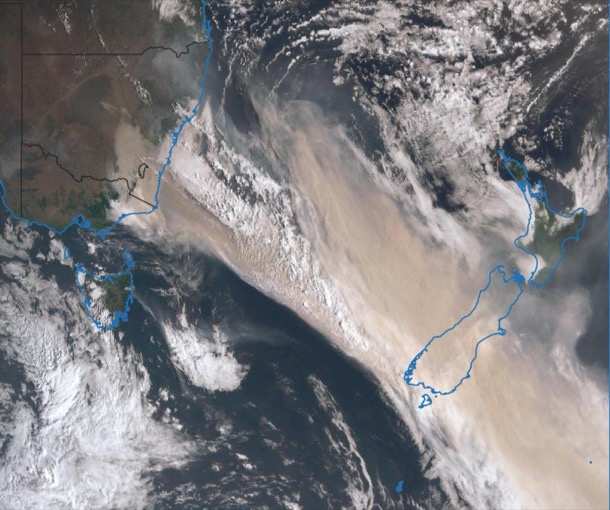
Smoke stretching to New Zealand
I planned to recover over January and be back into my busy life from the beginning of February. I would need a second operation, and had already begun to speculate on the least disruptive way to fit that into the months ahead.
News of a new virus from China was overshadowed by the antics of Trump and the horror of the fires. We heard from our friend Paul, the Point Hicks lighthouse keeper. He sent pictures from an unfamiliar burnt Thurra campground, and stories of sheltering in the lighthouse as the front approached. The first Australian Covid cases on January 25th hardly even caused a ripple in my world.
As February arrived, I felt my grand recovery plan was pretty much on track. I attended the first choir rehearsal, and Sue and I finalised the Recollections post we had begun in December. I was a little more tired than I had anticipated and I put off going back to singing lessons and to yoga. On February 7th I had a haircut. I had no way of knowing that it would be nine months before the next one.
Gradually, as the weeks passed and Autumn soothed the harshness of the Summer, my energy returned, and I began building back more fully. The first worrying Covid signs appeared: on March 2, there was the first Community transmission, and the first Victorian death on March 8. Nevertheless, I began Yoga classes, becoming more used to the lopsided feeling of a prosthetic left breast. The choir’s preparation for our Mikado season hotted up, and I spent lots of time matching costumes to singers, and practising my own part. Now those costumes are folded in boxes under my bed, as we tentatively plan a re-run in 2021.
The last regular engagement in my busy calendar was my weekly singing lesson. I made the arrangement to begin again on Tuesday March 10th, the day after the long weekend. On the Thursday we were all set to go to Bodhi’s twelfth birthday party.
That Tuesday, the WHO finally called it a pandemic and Dan Andrews, with Victorian cases at 36, set the first restrictions. Bodhi’s party was off, Singing lessons and Tuesday’s with Sue ended, and 2020 stretched ahead as a very different year.
THE BEGINNING - SUE'S STORY
By the time Margaret and I returned to our Tuesday routine in 2020 we had lived through a summer dominated by fire, grief, surgery and escalating concern about a virus in China.
In the weeks before Christmas, fires had ravaged much of NSW. Jono’s cousin Robert lost his house in the Blue Mountains and Sydney was covered in a pall of smoke, as mega blazes with towering flames devoured hectare after hectare of bush, destroying thousands and thousands of animals and hundreds of homes. We looked in horror at images of people huddled on beaches, as flames destroyed their town and firefighters were rendered powerless. Against this backdrop, in the week before Christmas, we were packing to go to Thurra. We began to have doubts: it was too dangerous. The bush was tinder dry after two years of drought in East Gippsland and the weather forecast was for hot, windy weather. After much deliberation and a family meeting at Thomas’, we collectively made the decision not to go! The kids were very disappointed, but to their credit, rallied, and began to plan what they could do instead. A week later, on January 31st, the Mallacoota fire roared through Croajingalong National Park, burning much of the park. Familiar places changed forever. Wingan Inlet, the Mueller Valley, the Thurra bridge and campground all gone.
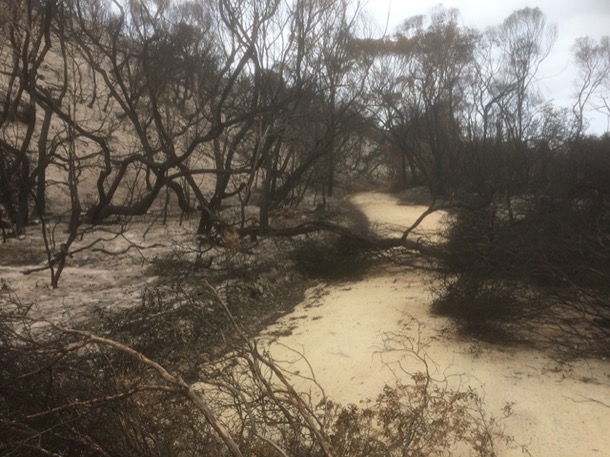
Thurra River Campground after the fire
January, and the fires were still raging as a creeping concern about the spread of a novel coronavirus in Wuhan appeared in news commentary; (COVID-19) the disease, caused by "severe acute respiratory syndrome coronavirus 2". These words were to become very familiar. On the January the 25th, we had a confirmed case of coronavirus in Melbourne, a returned Chinese citizen from Wuhan. This was the first case in Australia.
Three days later Anna was flying back from India via Singapore. We were very concerned that travellers from China would also be transiting through that transport hub. This is the first time I recall being concerned that the virus could infect a family member, or even someone I knew.
February, and Anna was back safely , the kids returned to school and the fire season continued, as the weather was hot and dry. Overseas, the news was alarming: news reports about escalating cases in China, Italy, Iran and on cruise ships. We began to learn more about how the virus spreads and how contagious it was. We closed our border to some foreign nationals, docking by cruise ships was restricted, and our neighbours cancelled their trip to India.
March, and Bodhi’s birthday on the 12th was cancelled! The consensus was: too many people and too risky in a small space. Jono and I went, vowing to socially distance. Unfamiliar with a behaviour that was to become second nature , we did not socially distance. That night, after discussion, we all decided that from now on birthday celebrations would need to at a safe distance and not inside. Little did we know that in 2020, Sara’s birthday in November, would be the only in-person celebration.
THE FIRST WAVE
MARCH 13 - MAY 11
KEY DATES
March 13 - 36 cases. National Cabinet formed.
March 15 - State of Emergency declared.First restrictions
March 19 - Ruby Princess disperses 2700 passengers around Australia
March 20 - Australia closes borders to non residents
March 22 - School holidays begin a week early. Run on toilet paper
March 30 - All Australian restrictions begin. Four reasons to leave home.
April 10 - Easter at home
April 15 - Home schooling begins
April 16 - Supermarkets introduce “old people’s hour”
April 27 - Massive ramp up in testing
May 5 - Outbreak in Cedar Meats Abattoir and meat processing plant.
May 11- Some easing of restrictions
MARGARET'S STORY
During those few days, in that second week of March, there were many signs that things were hotting up, as case numbers reached thirty-six. We had scheduled a choir committee meeting before the next Monday night’s rehearsal, and emails shot round the committee.
By the time the Monday came around, Victoria was in its first day of “State of Emergency”. Only half our singers came. We insisted that everyone wash their hands, and we announced that we had decided to stop rehearsals until after Easter, but we went ahead and sang lustily. We knew nothing of aerosol spread. We had not yet heard about the Seattle choir, who, on March 10th also all washed their hands and sat a little further away from each other. Fifty-two of them were infected and two died.
It took another week before it really began to feel personal. We tut-tutted about the Ruby Princess debacle, though its real impact was yet to become clear. The Australian borders closed to tourists. But these things were just items on the News. The habit of listening to Dan Andrews live in Press Conferences began during this time. I remember sitting in the sun in the late morning, as he announced that school holidays were beginning a week early. My friend Laraine complained on Facebook that she had see people buying huge quantities of toilet rolls. We made jokes about it.
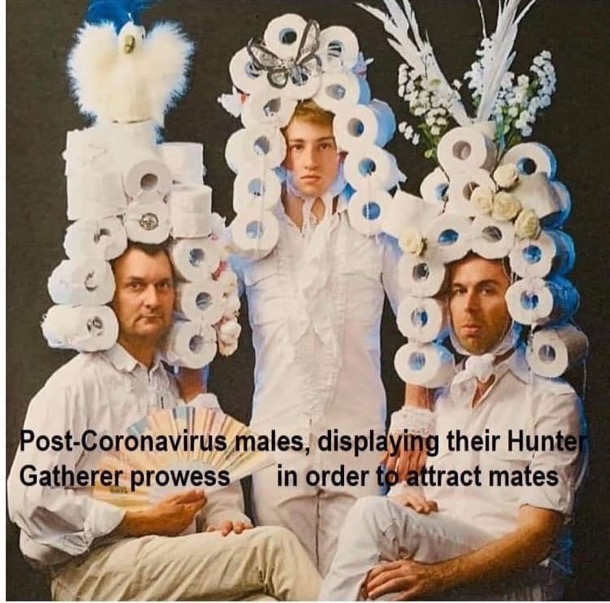
As the numbers of infected people in Australia climbed, the first frissons of alarm began. National Cabinet decided that all of Australia would restrict movement. This was the first time we heard the phrase “four reasons to leave home”, and “essential workers”.
We must have had some knowledge by then of infection rates. I remember waiting until fourteen days after Sage, our grandson, had had his last kinder session before we saw him. We poured over the legal document to see if we were allowed to call our visits “care”. I knitted him a “Bluey jumper”, listening to podcasts, filling in time.
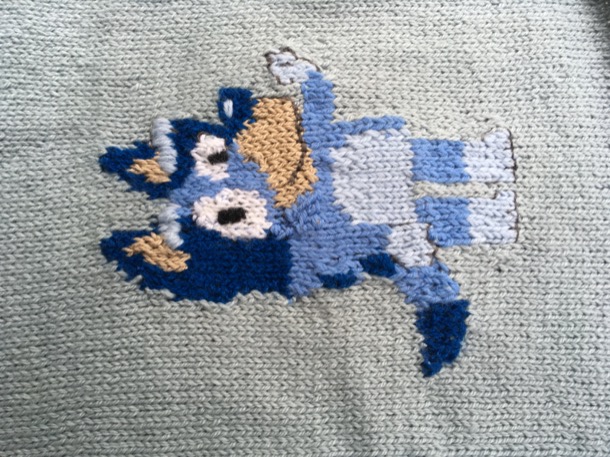
Life became quieter. There were noticeably fewer cars on the roads. Easter came and went. It was the first Easter Sunday for a long time that we had not had lunch with Chris’s parents. We watched Andrea Bocelli sing Panis Angelicus and stroll out to gaze up the empty Milan streets.
Here is the Facebook Post I did on April13th:
As I listened this morning to Andrea Bocelli’s beautiful Easter offering in the empty Duomo in Milan, and watched the footage of empty streets in the world’s great cities, I felt a sense of loss and sadness that I had seen in others, but hadn’t yet felt myself.
The footage reminded me of “The last Time I Saw Paris”, a sad song written by Jerome Kern in 1940. It would be another five years before Paris was liberated.
The camera in Milan roamed over a packed city. All those lives on hold, cooped up little apartments!
In New York, the only sound in the streets is sirens.
But then there is this.....
People in the Punjab, blinking like creatures exiting a cave, look to the north and there, hundreds of kilometres away are the white Himalayas. They have been hidden by pollution for decades.
Factory and vehicle emissions have dropped in China so much that two months worth of pollution reduction “likely has saved the lives of 4,000 kids under 5 and 73,000 adults over 70.”
According to The Climate Group, working from home has the potential to reduce over 300 MILLION tonnes of carbon emissions per year, and surely we will see a lot of that even after the lockdown. And there are stories of animals reclaiming the empty streets all over the world.
I downloaded the Panis Angelicus score in a key that suited me and taught myself to sing it. It became a piece of music I associate with that first Covid wave.
After the school holidays, the kids did not go back. Home schooling began. I was very glad that I was retired. We lived inside our little family bubble, relieving Michael and Katherine of their three year old twice a week. There was a weekly very early morning trip to the shops, first by Chris and then, when Woolworths introduced “old folk’s hour” at 7am, by me. Other than this we stayed home. My three quarters of a tank of petrol lasted until well into May.
Another new word in our vocabulary was Zoom. There were hilarious stories as the world got used to interactions with other people inside little square boxes…. like the man in a “ties and suits” business meeting, who stood up during the meeting, naked from the waist down, and deaf to the cries from his co workers.
During March I joined a couple of international virtual choirs, rehearsing via Zoom, and viewed later on YouTube. I recorded my contributions and sent them in for the engineers to do their magic. It was a way for choristers all over the world to recover something of what they had lost. I set my alarm for 3am to be part of the Self Isolation Choir’s Messiah “concert”. I chatted with fellow choristers on Facebook. But by May, I was losing interest.
My own choir, Singularity, “met” weekly from late April for the whole year. It meant listening only to the piano playing and singing your part by yourself, muted.
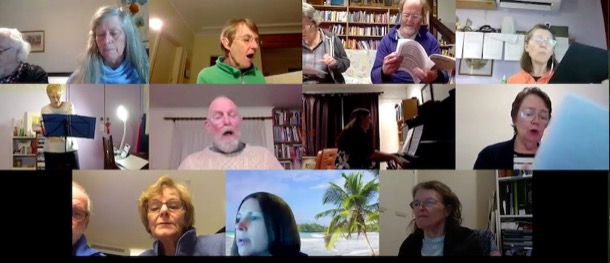
It was a poor imitation of the joy of voices harmonising together, but it was an important way to keep connected. We even held a little “soiree” concert, performing in turn for each other. I sang Panis Angelicus, my Covid anthem, with a YouTube karaoke backing track.
Even as “the numbers” subsided during May, and restrictions eased, singing together in the same room was unthinkable. We had all seen the Science of droplets and aerosols explained. Singing was going to be the last thing to come back. We would have to hang on and wait for a vaccine.
THE FIRST WAVE - SUE'S STORY
March is a jumble of memories and images ranging from the horror of dozens of ambulances lined up in New York streets, refrigerated shipping containers to store the dead outside overflowing hospitals, and the searing beauty of an Italian opera singer performing from her balcony, the aria floating over deserted streets.
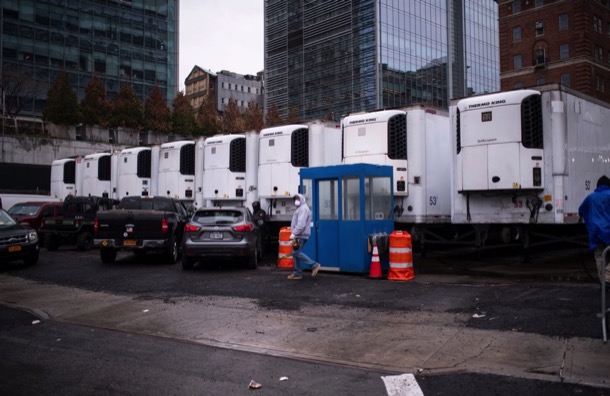
Makeshift morgue outside a New York hospital
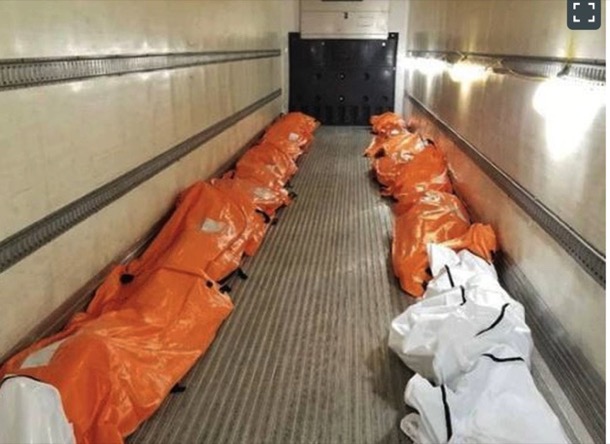
Bodies inside the refrigerator trucks.
The situation in many places overseas was dire but the virus was starting to get a hold in Australia. In this rapidly evolving situation, within the space of six days, a National Cabinet was formed for the first time since the Second World War, the Prime Minister boldly declared that he would still go to his beloved football match and Victoria declared a State of Emergency and limited gatherings. Four days later, the PM decided not to go to the football and instead closed our international borders to non-residents.
The virus was no longer a distant threat. It became personal. We didn’t feel elderly, but we fitted the category. Anna, Thomas, Riz and Tessa were concerned for us and, although quite challenged by the ‘vulnerable’ label, we did see the wisdom of restricting our contact with family and the outside world. Haircuts were cancelled, Poppy and Bodhi sat outside, when they were dropped at our place before school, and we no longer visited each other’s houses. Anna’s birthday, on the 18th of March, was the first remote birthday celebration of many to come.
End of March, and half a million cases globally. As cases grew in Australia, restrictions were imposed and life closed in. We felt very lucky to be an island nation and, as Australians, we felt that we were all in this together. All Australians were dealing with only being allowed to leave home for shopping, exercise, work and care giving. In Victoria, schools broke up a week early, and life changed.
Against this backdrop we tried to learn as much as we could about the virus. We faithfully listened to Norman Swann’s Coronacast, a daily podcast about the Coronavirus, and scoured the Internet for more information. In those early days the advice was that the virus was spread by touch. We carefully avoided touching surfaces, not knowing that aerosol spread was our biggest danger. When shopping, a few people wore masks and even gloves. We worried about eating fruit and vegetables that had been touched by other people, and we wiped down the groceries before putting them away. All cleaning materials, disinfectants, bleach, sanitiser and cakes of soap disappeared from supermarket and hardware shelves. Margaret and I both resorted to a bucket in the car boot containing a bottle of water, soap and a towel. I did the shopping, as Jono’s coronary artery disease put him in an extra vulnerable group.
As suburban supermarkets emptied, country supermarkets reported out of town shoppers, in mini buses, descending and stripping their shelves.
We were able to go to Billy Goat Hill, as it was our second residence, and we took a car full of food in case restrictions tightened and we were unable to get home. We also took our rate notice, in case we were challenged shopping in Alexandra, where we felt very conspicuous. Stories were circulating about people from the city shopping and bringing the virus with them. Apparently, very early one morning, the butcher in Yea was offered thousands of dollars cash for his entire stock of meat. He sent the gentleman away empty handed, telling him in no uncertain terms that he had local customers to supply. The panic buying lasted a few weeks and, once supermarket shelves filled up again, the community anxiety subsided.
Restricted in our activities and unable to see the children, grandchildren, family and friends, we began to spend more time at Billy Goat, where we did not even leave the property for shopping.
Lovely autumn days, and we had plenty to do. Days were dominated by hard work, and evenings by the latest Coronacast and the Covid news from Australia and around the world.
Easter, and having our evening drink, we listened to Andrea Bocelli sing to his deserted city. We could play it as loud as our blue tooth speaker would allow. We sat in isolation, watching the You Tube clip on the iPad, as this accomplished tenor sang to his deserted city.
The rest of April was dominated by cool burning the kangaroo grass and cleaning up after thinning.
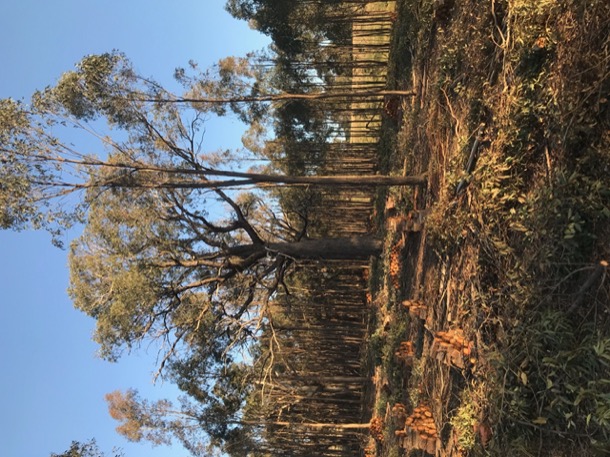
At home the children were coping with home schooling, and parents were supervising where needed. Thomas was still working so Tessa sat Poppy next to her and Bodhi worked on the kitchen bench.
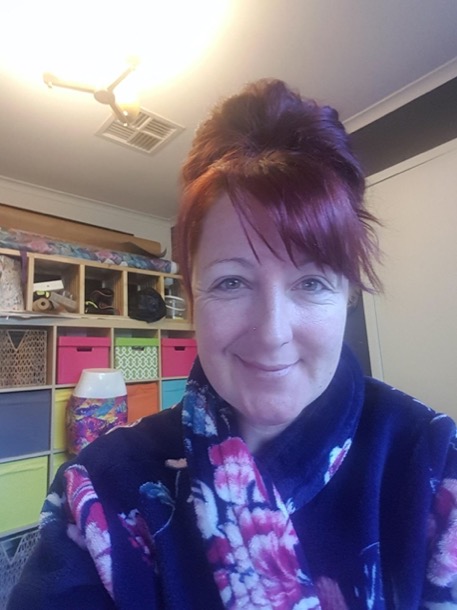
Tessa at the "office" in her dressing gown.
Riz continued to work from home and Anna did online tutoring with her students, while Aiden, Harper and Aurelia worked at their desks. As school work was often efficiently finished by lunchtime, the rest of the day was spent cooking, talking to friends or having ‘watch parties’. Although home schooling suited our grandchildren, it was challenging for some students, particularly the younger ones. I remember Anna telling me that the achievement for one session was having her small student sit on a chair in front of her screen, and not in her wardrobe. Teachers had new disciplinary issues to deal with, such as persuading a Prep student to put his sister down, get back on his chair and turn the microphone on.
Meanwhile, life continued at Billy Goat. Burning and thinning done and the weather now colder and very wet, we started on the erosion work.
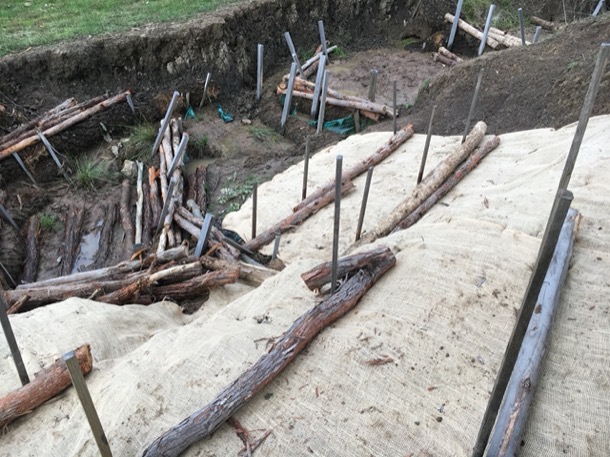
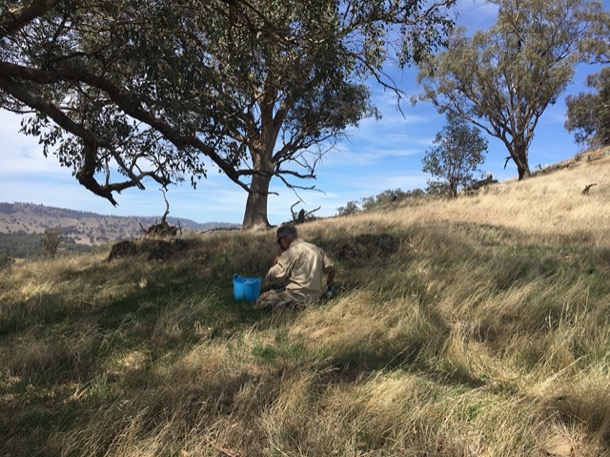
Numbers of daily cases were dropping and some there was some easing of restrictions. We decided however to remain cautious and still continue to restrict our lives and social interactions.
THE LULL
MAY 11 - JUNE 9
KEY DATES
May 11 - Some easing of restrictions
May 26 - Phased return to classrooms begins
June 1 - Stage 3 restrictions eased
June 9 - Last day of zero cases, numbers going up again
The month of May was a catch up time. We hoped it was a gradual return to normality. For most of May, kids were still doing home schooling, most people were working from home, shops and restaurants were still mostly shut, but there was a sniff of life opening up again.
Sue and Jono, after much deliberation, accepted an invitation to lunch at a friends’s house. Only one of the people present had been “out in the world”, so they decided to accept the risk. No “social distancing” happened of course. They sat around a table talking and laughing for several hours. There were no bad consequences, but it only happened once.
Hairdressers reopened during May, though appointment times were limited. Sue’s hairdresser had stories of cutting customers’ hair in the carpark.
I didn’t have my haircut during this time, but I did go the dentist to have a filling replaced; visited the doctor in Kallista, for drive through flu injections and had my car shock absorbers fixed at the Toyota service centre. Each of these felt like venturing out into the dangerous world. We preplanned, and chose our time carefully.
We had planned to ring Toyota late in the day, and say we couldn’t pick the car up, so that it would sit untouched in the yard overnight, and there would be “less virus” on all its surfaces when we collected it the following day. In the end, I picked it up and consciously only touched what I had to, and we didn’t drive it again for a few days.
Guests, where Sue and Jono had their car serviced, went one better. They wiped down every surface in the cars before their customers collected them.
The World Health Organisation, and our own authorities were still refusing to recognise that this corona virus spread primarily through the air, even though the evidence was mounting.
The other big appointment I had put off was my second breast operation. May seemed like the perfect time. Hospitals were available again, and I knew that I had to have it within a certain number of months. The surgeon agreed that this was “permissible surgery”, and we set the date for May 27th. The staff of Ringwood Private hospital did not wear any special protective equipment. Within that little haven, there might as well have been no pandemic.
A few days after, I had occasion to go to our local Ferntree Gully public hospital, and the contrast was noticeable. Everyone was masked. When asked about the difference, the doctor explained that public hospitals took everyone. They couldn’t screen their patients. So they needed to expect many more infection sources. I was careful to see nobody during the next two weeks.
Towards the end of May, there was even more gentle opening up. Schools returned to face to face teaching, gradually, class by class. Aurelia and Harper began footy training again. Alas, that little taste of normal life lasted only one week! As Autumn ticked over into winter, we watched with trepidation, as what would become Melbourne’s second wave appeared on the horizon.
As we begin work on this new post, the first one since February, babies conceived during this plague year are being born. Their normal is a Covid normal. Masked faces, elbow bumps and social distancing have replaced hugs and smiles. They will not be expected to “soldier on” through their cold symptoms. Every one of their days has its “epidemiology”, spelled out in graphs and statistics.
Norman Swan, Medical Science journalist, elevated by the pandemic to superstar status, calls this period, as the world begins the slow process of mass immunisation, “the end of the beginning”. We watch with well worn trepidation. And as we do, it feels like an important time to remember the details, to look back at the milestones, to explore the changes.
THE BEGINNING
JANUARY 25 - MARCH 12
January 25 - First Australian case, Wuhan returnee
January 31 - Chinese returnees have to quarantine in a third country
February 11 - WHO names the novel coronavirus and its disease
February 27 - Travellers from China, Iran and Italy banned
March 2 - First Australian community transmission
March 8 - First Australian death
March 9 - Carey Grammar school closed - staff case
March 12 -WHO calls it a pandemic for the first time, Prime Minister announces first economic stimulus package. Australia has had 142 cases so far.
MARGARET'S STORY
January 2020 had begun for me in hospital, five days after my mastectomy. The East coast of Australia was on fire, and Thurra River camp was already gone by then. But for a cautious decision to cancel their booking, the family would have been evacuated from there, just before it burnt.
Just as my cool hospital room, with its expansive views, insulated me from the smoky, hot air outside, so my personal health crisis kept me from the full force of the terrible losses in Gippsland and New South Wales.

Smoke stretching to New Zealand
I planned to recover over January and be back into my busy life from the beginning of February. I would need a second operation, and had already begun to speculate on the least disruptive way to fit that into the months ahead.
News of a new virus from China was overshadowed by the antics of Trump and the horror of the fires. We heard from our friend Paul, the Point Hicks lighthouse keeper. He sent pictures from an unfamiliar burnt Thurra campground, and stories of sheltering in the lighthouse as the front approached. The first Australian Covid cases on January 25th hardly even caused a ripple in my world.
As February arrived, I felt my grand recovery plan was pretty much on track. I attended the first choir rehearsal, and Sue and I finalised the Recollections post we had begun in December. I was a little more tired than I had anticipated and I put off going back to singing lessons and to yoga. On February 7th I had a haircut. I had no way of knowing that it would be nine months before the next one.
Gradually, as the weeks passed and Autumn soothed the harshness of the Summer, my energy returned, and I began building back more fully. The first worrying Covid signs appeared: on March 2, there was the first Community transmission, and the first Victorian death on March 8. Nevertheless, I began Yoga classes, becoming more used to the lopsided feeling of a prosthetic left breast. The choir’s preparation for our Mikado season hotted up, and I spent lots of time matching costumes to singers, and practising my own part. Now those costumes are folded in boxes under my bed, as we tentatively plan a re-run in 2021.
The last regular engagement in my busy calendar was my weekly singing lesson. I made the arrangement to begin again on Tuesday March 10th, the day after the long weekend. On the Thursday we were all set to go to Bodhi’s twelfth birthday party.
That Tuesday, the WHO finally called it a pandemic and Dan Andrews, with Victorian cases at 36, set the first restrictions. Bodhi’s party was off, Singing lessons and Tuesday’s with Sue ended, and 2020 stretched ahead as a very different year.
THE BEGINNING - SUE'S STORY
By the time Margaret and I returned to our Tuesday routine in 2020 we had lived through a summer dominated by fire, grief, surgery and escalating concern about a virus in China.
In the weeks before Christmas, fires had ravaged much of NSW. Jono’s cousin Robert lost his house in the Blue Mountains and Sydney was covered in a pall of smoke, as mega blazes with towering flames devoured hectare after hectare of bush, destroying thousands and thousands of animals and hundreds of homes. We looked in horror at images of people huddled on beaches, as flames destroyed their town and firefighters were rendered powerless. Against this backdrop, in the week before Christmas, we were packing to go to Thurra. We began to have doubts: it was too dangerous. The bush was tinder dry after two years of drought in East Gippsland and the weather forecast was for hot, windy weather. After much deliberation and a family meeting at Thomas’, we collectively made the decision not to go! The kids were very disappointed, but to their credit, rallied, and began to plan what they could do instead. A week later, on January 31st, the Mallacoota fire roared through Croajingalong National Park, burning much of the park. Familiar places changed forever. Wingan Inlet, the Mueller Valley, the Thurra bridge and campground all gone.

Thurra River Campground after the fire
January, and the fires were still raging as a creeping concern about the spread of a novel coronavirus in Wuhan appeared in news commentary; (COVID-19) the disease, caused by "severe acute respiratory syndrome coronavirus 2". These words were to become very familiar. On the January the 25th, we had a confirmed case of coronavirus in Melbourne, a returned Chinese citizen from Wuhan. This was the first case in Australia.
Three days later Anna was flying back from India via Singapore. We were very concerned that travellers from China would also be transiting through that transport hub. This is the first time I recall being concerned that the virus could infect a family member, or even someone I knew.
February, and Anna was back safely , the kids returned to school and the fire season continued, as the weather was hot and dry. Overseas, the news was alarming: news reports about escalating cases in China, Italy, Iran and on cruise ships. We began to learn more about how the virus spreads and how contagious it was. We closed our border to some foreign nationals, docking by cruise ships was restricted, and our neighbours cancelled their trip to India.
March, and Bodhi’s birthday on the 12th was cancelled! The consensus was: too many people and too risky in a small space. Jono and I went, vowing to socially distance. Unfamiliar with a behaviour that was to become second nature , we did not socially distance. That night, after discussion, we all decided that from now on birthday celebrations would need to at a safe distance and not inside. Little did we know that in 2020, Sara’s birthday in November, would be the only in-person celebration.
THE FIRST WAVE
MARCH 13 - MAY 11
KEY DATES
March 13 - 36 cases. National Cabinet formed.
March 15 - State of Emergency declared.First restrictions
March 19 - Ruby Princess disperses 2700 passengers around Australia
March 20 - Australia closes borders to non residents
March 22 - School holidays begin a week early. Run on toilet paper
March 30 - All Australian restrictions begin. Four reasons to leave home.
April 10 - Easter at home
April 15 - Home schooling begins
April 16 - Supermarkets introduce “old people’s hour”
April 27 - Massive ramp up in testing
May 5 - Outbreak in Cedar Meats Abattoir and meat processing plant.
May 11- Some easing of restrictions
MARGARET'S STORY
During those few days, in that second week of March, there were many signs that things were hotting up, as case numbers reached thirty-six. We had scheduled a choir committee meeting before the next Monday night’s rehearsal, and emails shot round the committee.
By the time the Monday came around, Victoria was in its first day of “State of Emergency”. Only half our singers came. We insisted that everyone wash their hands, and we announced that we had decided to stop rehearsals until after Easter, but we went ahead and sang lustily. We knew nothing of aerosol spread. We had not yet heard about the Seattle choir, who, on March 10th also all washed their hands and sat a little further away from each other. Fifty-two of them were infected and two died.
It took another week before it really began to feel personal. We tut-tutted about the Ruby Princess debacle, though its real impact was yet to become clear. The Australian borders closed to tourists. But these things were just items on the News. The habit of listening to Dan Andrews live in Press Conferences began during this time. I remember sitting in the sun in the late morning, as he announced that school holidays were beginning a week early. My friend Laraine complained on Facebook that she had see people buying huge quantities of toilet rolls. We made jokes about it.

As the numbers of infected people in Australia climbed, the first frissons of alarm began. National Cabinet decided that all of Australia would restrict movement. This was the first time we heard the phrase “four reasons to leave home”, and “essential workers”.
We must have had some knowledge by then of infection rates. I remember waiting until fourteen days after Sage, our grandson, had had his last kinder session before we saw him. We poured over the legal document to see if we were allowed to call our visits “care”. I knitted him a “Bluey jumper”, listening to podcasts, filling in time.

Life became quieter. There were noticeably fewer cars on the roads. Easter came and went. It was the first Easter Sunday for a long time that we had not had lunch with Chris’s parents. We watched Andrea Bocelli sing Panis Angelicus and stroll out to gaze up the empty Milan streets.
Here is the Facebook Post I did on April13th:
As I listened this morning to Andrea Bocelli’s beautiful Easter offering in the empty Duomo in Milan, and watched the footage of empty streets in the world’s great cities, I felt a sense of loss and sadness that I had seen in others, but hadn’t yet felt myself.
The footage reminded me of “The last Time I Saw Paris”, a sad song written by Jerome Kern in 1940. It would be another five years before Paris was liberated.
The camera in Milan roamed over a packed city. All those lives on hold, cooped up little apartments!
In New York, the only sound in the streets is sirens.
But then there is this.....
People in the Punjab, blinking like creatures exiting a cave, look to the north and there, hundreds of kilometres away are the white Himalayas. They have been hidden by pollution for decades.
Factory and vehicle emissions have dropped in China so much that two months worth of pollution reduction “likely has saved the lives of 4,000 kids under 5 and 73,000 adults over 70.”
According to The Climate Group, working from home has the potential to reduce over 300 MILLION tonnes of carbon emissions per year, and surely we will see a lot of that even after the lockdown. And there are stories of animals reclaiming the empty streets all over the world.
I downloaded the Panis Angelicus score in a key that suited me and taught myself to sing it. It became a piece of music I associate with that first Covid wave.
After the school holidays, the kids did not go back. Home schooling began. I was very glad that I was retired. We lived inside our little family bubble, relieving Michael and Katherine of their three year old twice a week. There was a weekly very early morning trip to the shops, first by Chris and then, when Woolworths introduced “old folk’s hour” at 7am, by me. Other than this we stayed home. My three quarters of a tank of petrol lasted until well into May.
Another new word in our vocabulary was Zoom. There were hilarious stories as the world got used to interactions with other people inside little square boxes…. like the man in a “ties and suits” business meeting, who stood up during the meeting, naked from the waist down, and deaf to the cries from his co workers.
During March I joined a couple of international virtual choirs, rehearsing via Zoom, and viewed later on YouTube. I recorded my contributions and sent them in for the engineers to do their magic. It was a way for choristers all over the world to recover something of what they had lost. I set my alarm for 3am to be part of the Self Isolation Choir’s Messiah “concert”. I chatted with fellow choristers on Facebook. But by May, I was losing interest.
My own choir, Singularity, “met” weekly from late April for the whole year. It meant listening only to the piano playing and singing your part by yourself, muted.

It was a poor imitation of the joy of voices harmonising together, but it was an important way to keep connected. We even held a little “soiree” concert, performing in turn for each other. I sang Panis Angelicus, my Covid anthem, with a YouTube karaoke backing track.
Even as “the numbers” subsided during May, and restrictions eased, singing together in the same room was unthinkable. We had all seen the Science of droplets and aerosols explained. Singing was going to be the last thing to come back. We would have to hang on and wait for a vaccine.
THE FIRST WAVE - SUE'S STORY
March is a jumble of memories and images ranging from the horror of dozens of ambulances lined up in New York streets, refrigerated shipping containers to store the dead outside overflowing hospitals, and the searing beauty of an Italian opera singer performing from her balcony, the aria floating over deserted streets.

Makeshift morgue outside a New York hospital

Bodies inside the refrigerator trucks.
The situation in many places overseas was dire but the virus was starting to get a hold in Australia. In this rapidly evolving situation, within the space of six days, a National Cabinet was formed for the first time since the Second World War, the Prime Minister boldly declared that he would still go to his beloved football match and Victoria declared a State of Emergency and limited gatherings. Four days later, the PM decided not to go to the football and instead closed our international borders to non-residents.
The virus was no longer a distant threat. It became personal. We didn’t feel elderly, but we fitted the category. Anna, Thomas, Riz and Tessa were concerned for us and, although quite challenged by the ‘vulnerable’ label, we did see the wisdom of restricting our contact with family and the outside world. Haircuts were cancelled, Poppy and Bodhi sat outside, when they were dropped at our place before school, and we no longer visited each other’s houses. Anna’s birthday, on the 18th of March, was the first remote birthday celebration of many to come.
End of March, and half a million cases globally. As cases grew in Australia, restrictions were imposed and life closed in. We felt very lucky to be an island nation and, as Australians, we felt that we were all in this together. All Australians were dealing with only being allowed to leave home for shopping, exercise, work and care giving. In Victoria, schools broke up a week early, and life changed.
Against this backdrop we tried to learn as much as we could about the virus. We faithfully listened to Norman Swann’s Coronacast, a daily podcast about the Coronavirus, and scoured the Internet for more information. In those early days the advice was that the virus was spread by touch. We carefully avoided touching surfaces, not knowing that aerosol spread was our biggest danger. When shopping, a few people wore masks and even gloves. We worried about eating fruit and vegetables that had been touched by other people, and we wiped down the groceries before putting them away. All cleaning materials, disinfectants, bleach, sanitiser and cakes of soap disappeared from supermarket and hardware shelves. Margaret and I both resorted to a bucket in the car boot containing a bottle of water, soap and a towel. I did the shopping, as Jono’s coronary artery disease put him in an extra vulnerable group.
As suburban supermarkets emptied, country supermarkets reported out of town shoppers, in mini buses, descending and stripping their shelves.
We were able to go to Billy Goat Hill, as it was our second residence, and we took a car full of food in case restrictions tightened and we were unable to get home. We also took our rate notice, in case we were challenged shopping in Alexandra, where we felt very conspicuous. Stories were circulating about people from the city shopping and bringing the virus with them. Apparently, very early one morning, the butcher in Yea was offered thousands of dollars cash for his entire stock of meat. He sent the gentleman away empty handed, telling him in no uncertain terms that he had local customers to supply. The panic buying lasted a few weeks and, once supermarket shelves filled up again, the community anxiety subsided.
Restricted in our activities and unable to see the children, grandchildren, family and friends, we began to spend more time at Billy Goat, where we did not even leave the property for shopping.
Lovely autumn days, and we had plenty to do. Days were dominated by hard work, and evenings by the latest Coronacast and the Covid news from Australia and around the world.
Easter, and having our evening drink, we listened to Andrea Bocelli sing to his deserted city. We could play it as loud as our blue tooth speaker would allow. We sat in isolation, watching the You Tube clip on the iPad, as this accomplished tenor sang to his deserted city.
The rest of April was dominated by cool burning the kangaroo grass and cleaning up after thinning.

At home the children were coping with home schooling, and parents were supervising where needed. Thomas was still working so Tessa sat Poppy next to her and Bodhi worked on the kitchen bench.

Tessa at the "office" in her dressing gown.
Riz continued to work from home and Anna did online tutoring with her students, while Aiden, Harper and Aurelia worked at their desks. As school work was often efficiently finished by lunchtime, the rest of the day was spent cooking, talking to friends or having ‘watch parties’. Although home schooling suited our grandchildren, it was challenging for some students, particularly the younger ones. I remember Anna telling me that the achievement for one session was having her small student sit on a chair in front of her screen, and not in her wardrobe. Teachers had new disciplinary issues to deal with, such as persuading a Prep student to put his sister down, get back on his chair and turn the microphone on.
Meanwhile, life continued at Billy Goat. Burning and thinning done and the weather now colder and very wet, we started on the erosion work.


Numbers of daily cases were dropping and some there was some easing of restrictions. We decided however to remain cautious and still continue to restrict our lives and social interactions.
THE LULL
MAY 11 - JUNE 9
KEY DATES
May 11 - Some easing of restrictions
May 26 - Phased return to classrooms begins
June 1 - Stage 3 restrictions eased
June 9 - Last day of zero cases, numbers going up again
The month of May was a catch up time. We hoped it was a gradual return to normality. For most of May, kids were still doing home schooling, most people were working from home, shops and restaurants were still mostly shut, but there was a sniff of life opening up again.
Sue and Jono, after much deliberation, accepted an invitation to lunch at a friends’s house. Only one of the people present had been “out in the world”, so they decided to accept the risk. No “social distancing” happened of course. They sat around a table talking and laughing for several hours. There were no bad consequences, but it only happened once.
Hairdressers reopened during May, though appointment times were limited. Sue’s hairdresser had stories of cutting customers’ hair in the carpark.
I didn’t have my haircut during this time, but I did go the dentist to have a filling replaced; visited the doctor in Kallista, for drive through flu injections and had my car shock absorbers fixed at the Toyota service centre. Each of these felt like venturing out into the dangerous world. We preplanned, and chose our time carefully.
We had planned to ring Toyota late in the day, and say we couldn’t pick the car up, so that it would sit untouched in the yard overnight, and there would be “less virus” on all its surfaces when we collected it the following day. In the end, I picked it up and consciously only touched what I had to, and we didn’t drive it again for a few days.
Guests, where Sue and Jono had their car serviced, went one better. They wiped down every surface in the cars before their customers collected them.
The World Health Organisation, and our own authorities were still refusing to recognise that this corona virus spread primarily through the air, even though the evidence was mounting.
The other big appointment I had put off was my second breast operation. May seemed like the perfect time. Hospitals were available again, and I knew that I had to have it within a certain number of months. The surgeon agreed that this was “permissible surgery”, and we set the date for May 27th. The staff of Ringwood Private hospital did not wear any special protective equipment. Within that little haven, there might as well have been no pandemic.
A few days after, I had occasion to go to our local Ferntree Gully public hospital, and the contrast was noticeable. Everyone was masked. When asked about the difference, the doctor explained that public hospitals took everyone. They couldn’t screen their patients. So they needed to expect many more infection sources. I was careful to see nobody during the next two weeks.
Towards the end of May, there was even more gentle opening up. Schools returned to face to face teaching, gradually, class by class. Aurelia and Harper began footy training again. Alas, that little taste of normal life lasted only one week! As Autumn ticked over into winter, we watched with trepidation, as what would become Melbourne’s second wave appeared on the horizon.

